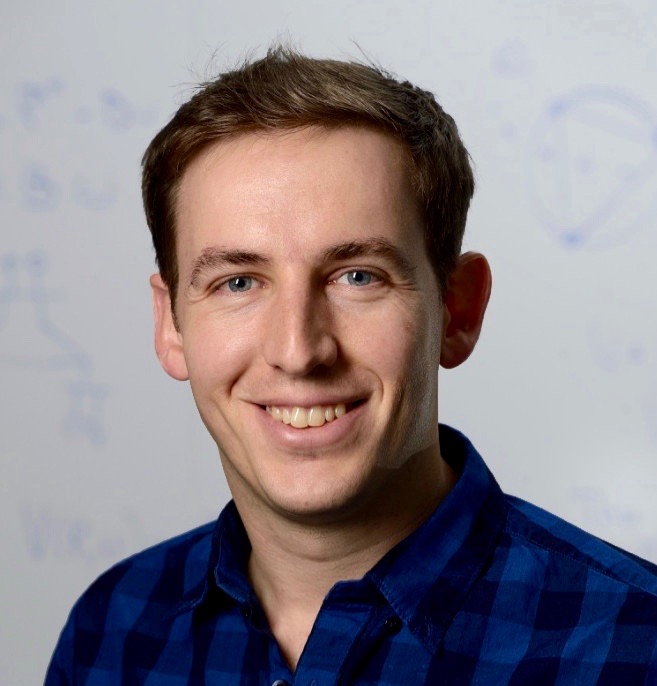Data Science Seminar
Welcome to the Data Science Seminar. The topics of the talks will vary among multiple topics in applied analysis, probability, applied mathematics related to data and dynamical systems, statistical and machine learning, signal processing, and computation.
To the attending graduate students: together with each talk we include a list of papers that are relevant to that talk, and we strongly encourage the graduate students to read those papers both in advance of the talk and after it. |
- Fall 2025
- Spring 2025
- Fall 2024
- Spring 2024
- Fall 2022
- Spring 2022
- Fall 2021
- Spring 2020
- Fall 2019
- Spring 2019
- Fall 2018
- Spring 2018
- Fall 2017
- Spring 2017
- Fall 2016
|
Organizers: Fei Lu, Mauro Maggioni. Contact us if you would like to meet with the speakers. |
| The Data Science Seminar will be held in-person in Bloomberg 178 at 3:00- 4:00 pm EST on Wednesdays, with a ZOOM Meeting ID: 926 3703 4092 Passcode: 507989. |
|
September 3
Bloomberg 178
Jingmin Sun
Johns Hopkins University
PDE Foundation Model: Generalization, Learning to Learn and more
This talk explores the path toward foundation models for scientific computing, focusing on learning solution operators for parametric partial differential equations (PDEs). The core of the presentation showcases our contributions to overcoming these limitations: (1) A multi-modal transformer framework (PROSE) that achieves zero-shot generalization to new PDE families by jointly processing input functions and symbolic equations; and (2) A meta-learning strategy (LeMON) that enables a single pre-trained neural operator to rapidly adapt to new physical systems with minimal data. Together, these advances bridge the gap between specialized, single-task solvers and a flexible, multi-operator foundation model capable of real-time simulation and design. |
|
|
September 10
Bloomberg 178
Soledad Villar
Johns Hopkins University
Algebra and invariant theory for machine learning
In this talk, we present a few ideas based on algebraic techniques (invariant theory, Galois theory, and representation stability) to analyze existing machine learning models and design new ones. In particular, we use Galois theory to design invariant machine learning models on point clouds, and we use ideas from representation stability to study machine learning models that with a fixed set of parameters can be applied to objects of different sizes. We show applications to graphs, point clouds, sets, and PDEs. |
|
|
September 24
Bloomberg 178
Tim Kunisky
Johns Hopkins University
Tailoring matrices to boost spectral algorithms
Spectral algorithms, ones performing hypothesis testing or estimation by looking at the eigenvalues and eigenvectors of a suitable matrix, are one of the central computational techniques of high-dimensional statistics. They enjoy the advantages of being simple to define, efficient, robust, and often straightforward to analyze using the powerful machinery of random matrix theory. However, this talk will show that, in several widely studied settings, the "naive" spectral algorithm one might naturally reach for is suboptimal, and can be improved on by building matrices taking advantage of surprising sources of signal in a dataset. I will present two illustrative vignettes. In the planted clique problem over graphs, the natural spectral algorithm applied to the adjacency matrix can be surpassed by instead working with a "nonlinear Laplacian", a linear combination of the adjacency matrix and a nonlinear function of the diagonal degree matrix---this, even in parameter regimes where the latter matrix is statistically useless on its own. And, in the synchronization problem over finite or compact groups, various ad hoc spectral methods are inferior to combining spectral information from several matrices chosen according to the representation theory of the underlying group. Through these examples, I will argue that much remains to be understood about spectral algorithms: even in these basic models and for algorithms just a step beyond the simplest ones, one can find unexpected improvements that hinge on delicate phenomena of random matrix theory. Further, optimally tuning these more flexible algorithms already appears to be a task currently amenable only to heuristics and numerical experiments. Finally, time permitting, I will propose a broader research program of using equivariant matrix-to-matrix functions to systematically design matrices for spectral methods and will discuss some of the theoretical challenges this direction poses. Based on joint work with Yuxin Ma and Shujing Chen. |
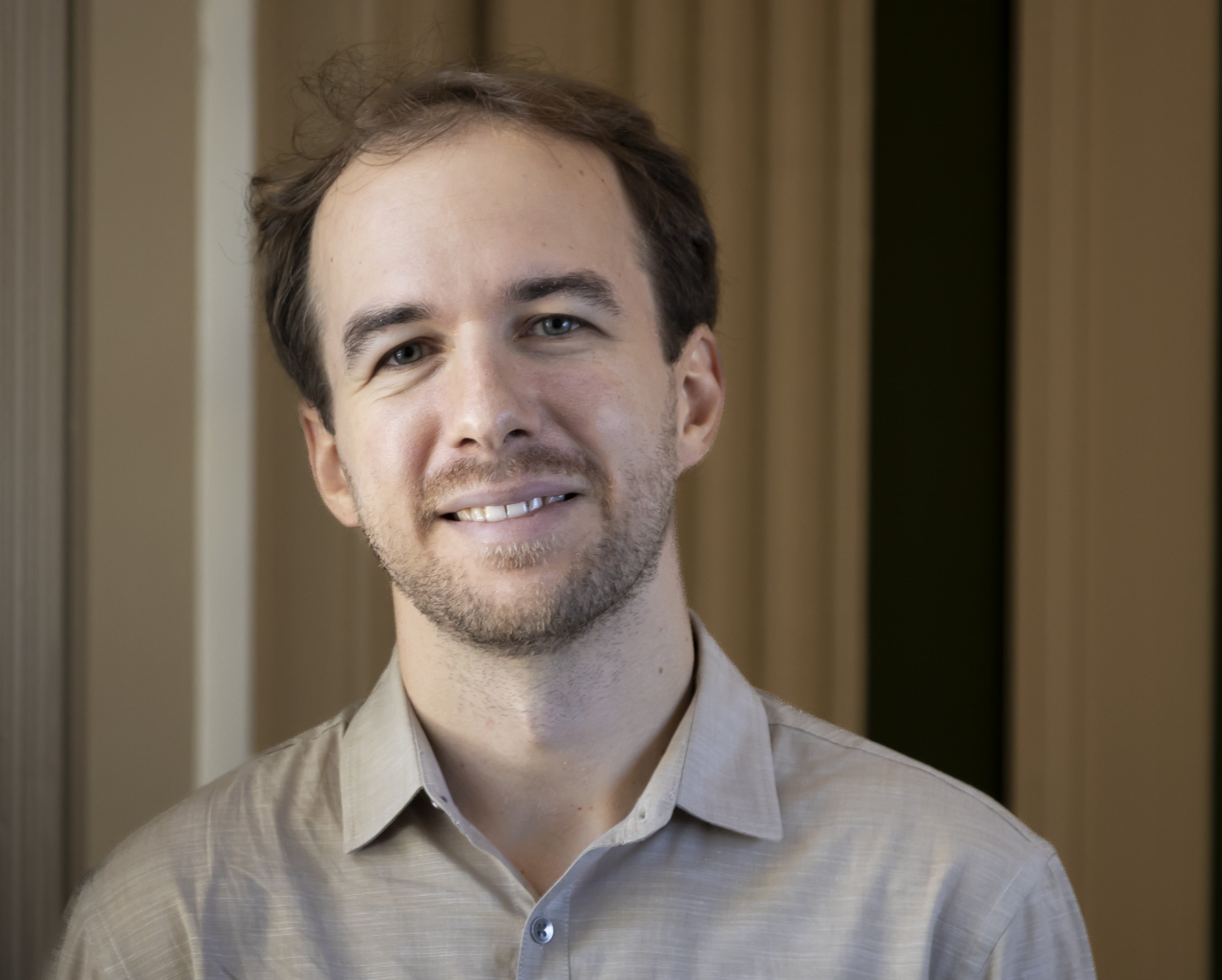 |
|
October 29
Bloomberg 178
Peirong Liu
Johns Hopkins University
TBD
TBD |
|
|
Organizers: Xiong Wang, Fei Lu, Mauro Maggioni. Contact us if you would like to meet with the speakers. |
| The Data Science Seminar will be held in-person at Hodson 110 at 3:00- 4:00 pm EST on Wednesdays. |
|
Feb. 26
Hodson 110
Debarghya Mukherjee
Boston University
Statistical theory of deep neural network for learning structured problems
In the modern landscape of machine learning and artificial intelligence, deep neural networks (DNNs) have demonstrated remarkable success across various domains. However, despite their widespread empirical effectiveness, our theoretical understanding of DNNs remains in its early stages. In this talk, I will present results on the estimation of non-parametric functions using deep neural networks, emphasizing how these models adapt to underlying low-dimensional compositional structures in data. Specifically, we show that when the true data-generating function possesses such a structure, DNNs can exploit it to achieve faster convergence rates. Additionally, I will discuss the minimax optimality of DNNs, with respect to both the sample size and the covariate dimensionality. Finally, I will highlight our recent findings on the analysis of Physics-Informed Neural Networks (PINNs), providing theoretical justification for their effectiveness in learning physical processes. These results contribute to a deeper understanding of why and when DNNs excel in complex function estimation tasks. |
 |
|
March 12
Hodson 110
Nicholas Boffi
Carnegie Mellon University
Generative modeling with stochastic interpolants
We introduce a class of generative models that unifies flows and diffusions. These models are built using a continuous-time stochastic process called a stochastic interpolant, which exactly connects two arbitrary probability densities in finite time. We show that the time-dependent density of the stochastic interpolant satisfies both a first-order transport equation and an infinite family of forward and backward Fokker-Planck equations with tunable diffusion coefficients. This viewpoint yields deterministic and stochastic generative models built dynamically from an ordinary or stochastic differential equation with an adjustable noise level. To formulate a practical algorithm, we discuss how the resulting drift functions can be characterized variationally and learned efficiently over flexible parametric classes such as neural networks. Empirically, we highlight the advantages of our formalism -- and the tradeoffs between deterministic and stochastic sampling -- through numerical examples in image generation, inverse imaging, probabilistic forecasting, and accelerated sampling. |
|
|
April 9
Hodson 110
Wenjing Liao
Georgia Institute of Technology
Exploiting Low-Dimensional Data Structures and Understanding Neural Scaling Laws of Transformers
When training deep neural networks, a model’s generalization error is often observed to follow a power scaling law dependent on the model size and the data size. Perhaps the best-known example of such scaling laws is for transformer-based large language models (LLMs), where networks with billions of parameters are trained on trillions of tokens of text. A theoretical interest in LLMs is to understand why transformer scaling laws exist. To answer this question, we exploit low-dimensional structures in language datasets by estimating its intrinsic dimension and establish statistical estimation and mathematical approximation theories for transformers to predict the scaling laws. By leveraging low-dimensional data structures, we can explain transformer scaling laws in a way which respects the data geometry. Furthermore, we test our theory with empirical observations by training LLMs on language datasets and find strong agreement between the observed empirical scaling laws and our theoretical predictions. |
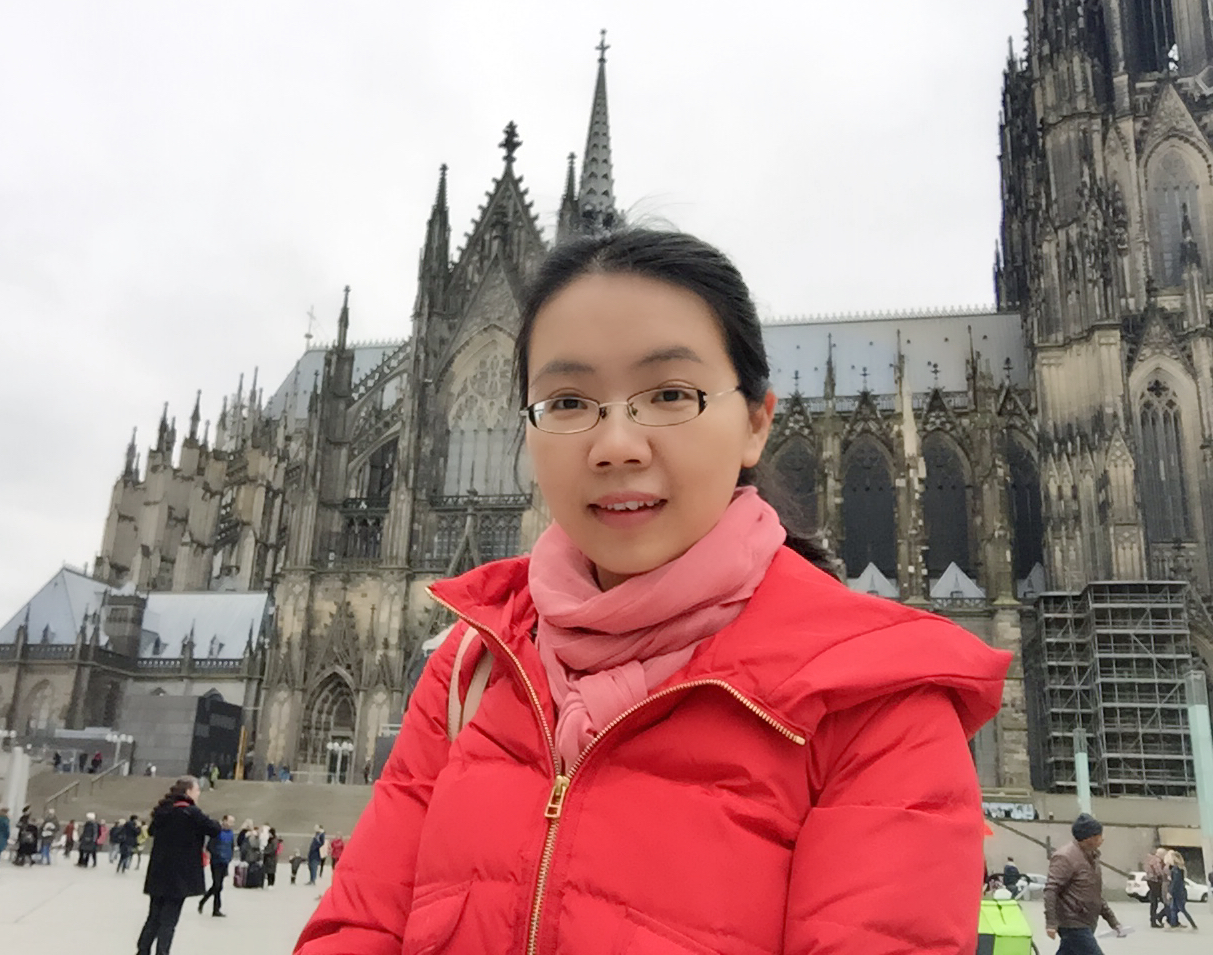 |
|
April 16
Krieger 134A
Mirjeta Pasha
Virginia Tech
A Tour on Bayesian and Deterministic Methods with Heavy-Tailed Priors for Spatio-Temporal Inverse Problems
Rapid technological advancements on detector speed and photon counting have increased the interest toward X-ray computed tomography along with the need for new models and methods to process the data. Tackling the immediate challenges that arise from growing model complexities (spatiotemporal measurements) and data-intensive studies (large-scale and high-dimensional measurements), state-of-the-art methods can easily exceed their limits of applicability. In this talk we discuss recent advancements on edge-preserving and computationally efficient methods for computing solutions to dynamic inverse problems, where both the quantities of interest and the forward operator change at different time instances. In the first part of the talk, to remedy these difficulties, we apply efficient regularization methods that enforce simultaneous regularization in space and time (such as edge enhancement at each time instant and proximity at consecutive time instants) and achieve this with low computational cost and enhanced accuracy along with a model estimation for capturing the dynamics. In the remainder of the talk, we focus on designing spatio-temporal Bayesian Besov priors for computing the MAP estimate and quantifying the uncertainties for large-scale and dynamic inverse problems. Numerical examples from a wide range of applications are used to illustrate the effectiveness of the described methods. |
|
|
April 23
Krieger 134A
Daniel Messenger
Los Alamos National Labs
The weak form is stronger than you think
Equation learning has been a holy grail of scientific research for decades. Only recently has the capability of learning equations directly from data become a computationally feasible task, due to the availability of high-resolution data and fast algorithms capable of surpassing the inherent combinatorial complexity of model selection. Weak form equation learning has arisen as an advantageous framework for efficiently selecting models from data with noise and non-smoothness, qualities inherent to observed data. By viewing the dynamics through the guise of test functions, the weak form affords a flexible representation of the governing equations that naturally incorporates these data maladies. More generally, the weak form has been shown to reveal alternative dynamical descriptions, such as coarse-grained and reduced-order models, approaching hierarchical model discovery. In this talk I will give a broad overview of historical advances in weak form equation learning and parameter inference, from the 1950s to WSINDy and more recent algorithms. I will then give an outlook for future research directions in this field in light of recently demonstrated successes and limitations, both theoretical and applied. Applications to molecular dynamics, plasma physics, cell biology, and weather forecasting will be discussed. |
|
|
Organizers: Xiong Wang, Fei Lu, Mauro Maggioni. Contact us if you would like to meet with the speakers. |
| The Data Science Seminar will be held in-person at Gilman 377 at 3:00-4:00pm EST on Wednesdays. |
|
Oct.2
In person, Gilman 377
Haibo Li
School of Mathematics and Statistics at the University of Melbourne
A preconditioned Krylov subspace method for regularizing linear inverse problems
Tikhonov regularization is a widely used technique in solving inverse problems that can enforce prior properties on the desired solution. In this talk, I will present a Krylov subspace-based iterative method for solving linear inverse problems with general-form Tikhonov regularization term $x^\top M x$ , where $M$ is a positive semidefinite matrix. An iterative process called the preconditioned Golub-Kahan bidiagonalization (pGKB) is designed, which implicitly utilizes a proper preconditioner to generate a series of solution subspaces with desirable properties encoded by the regularizer $x^\top M x$. Based on the pGKB process, we propose an iterative regularization algorithm via projecting the original problem onto small dimensional solution subspaces. We analyze the regularization properties of this algorithm, including the incorporation of prior properties of the desired solution into the solution subspace and the semiconvergence behavior of the regularized solution. To overcome instabilities caused by semiconvergence, we further propose two pGKB-based hybrid regularization algorithms. All the proposed algorithms are tested on both small-scale and large-scale linear inverse problems. Numerical results demonstrate that these iterative algorithms exhibit excellent performance, outperforming other state-of-the-art algorithms in some cases. |
|
Oct.16
In person, Gilman 377
Wuchen Li
Department of Mathematics, University of South Carolina
Transport information geometric computations
We provide a numerical analysis and computation of neural network projected schemes for approximating one-dimensional Wasserstein gradient flows. We approximate the Lagrangian mapping functions of gradient flows by the class of two-layer neural network functions with ReLU (rectified linear unit) activation functions. The numerical scheme is based on a projected gradient method, namely the Wasserstein natural gradient, where the projection is constructed from the $L^2$ mapping spaces onto the neural network parameterized mapping space. We establish theoretical guarantees for the performance of the neural projected dynamics. We derive a closed-form update for the scheme with well-posedness and explicit consistency guarantee for a particular choice of network structure. General truncation error analysis is also established on the basis of the projective nature of the dynamics. Numerical examples, including gradient drift Fokker-Planck equations, porous medium equations, and Keller-Segel models, verify the accuracy and effectiveness of the proposed neural projected algorithm. This is based on a joint work with Xinzhe Zuo (UCLA), Jiaxi Zhao (NUS), Shu Liu (UCLA), and Stanley Osher (UCLA). |
|
Nov. 13
In person, Gilman 377
James Murphy
Department of Mathematics, Tufts University
Intrinsic Models in Wasserstein Space with Applications to Signal and Image Processing
We study the problems of efficient modeling and representation learning for probability distributions in Wasserstein space. We consider a general barycentric coding model in which data are represented as 2-Wasserstein (W2) barycenters of a set of fixed reference measures. Leveraging the geometry of W2-space, we develop a tractable optimization program to learn the barycentric coordinates and provide a consistent statistical procedure for learning these coordinates when the measures are accessed only by i.i.d. samples. Our consistency results and algorithms exploit entropic regularization of the optimal transport problem, and the statistical convergence of entropic optimal transport maps will be discussed. We also consider the problem of learning reference measures given observed data. Our regularized approach to dictionary learning in W2-space addresses core problems of ill-posedness and in practice learns interpretable dictionary elements and coefficients useful for downstream tasks. We will also consider the question of representational capacity of barycentric models in W2-space and contrast with linear approximation methods. Applications of optimal transport to image inpainting, reduced order modeling of molecular dynamics simulations, and nonlinear hyperspectral unmixing will be considered. |
 |
|
Dec. 4
In person, Gilman 377
Anna Little
Department of Mathematics, University of Utah
Constructing Features from Data: Dimension Reduction, Interpretability, and Invariants
This talk explores how to construct meaningful features from noisy, high-dimensional data, with a focus on three key objectives: reducing dimensionality, ensuring interpretability, and achieving invariance to nuisance variations. First, we introduce a geometric framework for dimension reduction using a power-weighted path metric, which effectively de-noises high-dimensional data while preserving its intrinsic geometric structure. This framework is particularly useful for analyzing single-cell RNA data and for multi-manifold clustering, and we provide theoretical guarantees for the convergence of the associated graph Laplacian operators. Next, we address the goal of interpretability in the context of linear distance metric learning, presenting a novel convex optimization approach to learn linear maps between metric spaces even in the presence of noise. We also establish sample complexity bounds and propose a method for truncating to low-rank models without compromising accuracy. Finally, we tackle the challenge of constructing features that are invariant to certain group actions, focusing on the multi-reference alignment (MRA) data model. We extend classical MRA to handle both translation and random scale changes, providing a robust framework for signal recovery from noisy observations. |
 |
|
Organizers: Xiong Wang, Mauro Maggioni, Fei Lu. Contact us if you would like to meet with the speakers. |
| Spring 2024: The Data Science Seminar will be held in person Krieger 411, at 3:00-4:00pm EST on Wednesdays . |
|
April 10
In person, Krieger 411
Inbar Serrousi
Department of Mathematics,
From Stochastic to Deterministic: SGD dynamics of non-convex
models in high dimensions
Stochastic gradient descent (SGD) stands as a cornerstone of optimization and modern machine learning. However, understanding why SGD performs so well remains a major challenge. In this talk, I will present a theory for SGD in high dimensions when the number of samples and problem dimensions are large. We show that the dynamics of one-pass SGD applied to generalized linear models and multi-index problems with data possessing a general covariance matrix become deterministic in the large sample and dimensional limit. In particular, the limiting dynamics are governed by a set of low-dimensional ordinary differential equations (ODEs). Our setup encompasses many optimization problems, including linear regression, logistic regression, and two-layer neural networks. In addition, it unveils the implicit bias inherent in SGD. For each of these problems, the deterministic equivalent of SGD enables us to derive a close approximation of the generalization error (with explicit and vanishing error bounds). Furthermore, we leverage our theorem to establish explicit conditions on the step size, ensuring the convergence and stability of SGD within high-dimensional settings. This is joint work with Elizabeth-Collins-Woodfin, Courtney Paquette, and Elliot Paquette, for more information see arXiv2308.08977. |
|
|
May 1, 3:00-4:00pm EST
In person, Krieger 413
Richard Zhang
Department of Electrical and Computer Engineering, UIUC
Rank Overparameterization and Chordal Conversion for Large-Scale Low-rank Optimization
Optimization problems over low-rank matrices are ubiquitous in the real-world. In principle, these can be reliably solved to global optimality via convex relaxation, but the computational costs can become prohibitive on a large scale. In practice, it is much more common to optimize over the low-rank matrices directly, as in the Burer-Monteiro approach, but their nonconvexity can cause failure by getting stuck at a spurious local minimum. For safety-critical societal applications, such as the operation and planning of an electricity grid, our inability to reliably achieve global optimality can have significant real-world consequences. In the first part of this talk, we investigate global optimality guarantees by overparameterizing the low-rank factorization. In the smooth and strongly-convex setting, we rigorously show that, as the rank is increased, spurious local minima become increasingly rare in a step-wise fashion. In other words, rank-2 has fewer spurious local minima than rank-1, and rank-3 has fewer than rank-2, etc. Once the rank exceeds an O(1) threshold, every remaining local minimum is a global minimum, and every saddle point can be escaped. In the second part of this talk, we revisit convex relaxations. Here, chordal conversion is a heuristic widely used to reduce the per-iteration cost of interior-point methods to as low as linear time, but a theoretical explanation for this speedup was previously unknown. We give a sufficient condition for the speedup, which covers many successful applications of chordal conversion, including the MAX-k-CUT relaxation, the Lovasz Theta problem, sensor network localization, polynomial optimization, and the AC optimal power flow relaxation, thus allowing theory to match practical experience. Main related papers: https://arxiv.org/abs/2207.01789 and https://arxiv.org/abs/2306.15288 . |
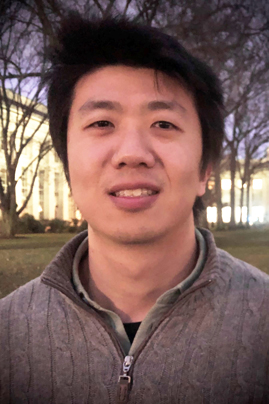 |
|
May 3, 3:00-4:00pm EST
In person, Krieger 413
Zhenfu Whang
Beijing International Center for Mathematical Research (BICMR), Peking University
Uniform-in-time propagation of chaos for second order interacting particle systems
We study the long time behavior of second order particle systems interacting through global Lipschitz kernels. Combining the hypocoercivity method by Villani and the relative entropy method by Jabin and Wang, we are able to overcome the degeneracy of diffusion in position direction by controlling the relative entropy and relative Fisher information together. This implies the uniform-in-time propagation of chaos through the strong convergence of all marginals. Our method works at the level of Liouville equation and relies on the Log Sobolev inequality of equilibrium of Vlasov-Fokker-Planck equation. This is based on a joint work with Yun Gong (Peking University) and Pengzhi Xie (Fudan University). |
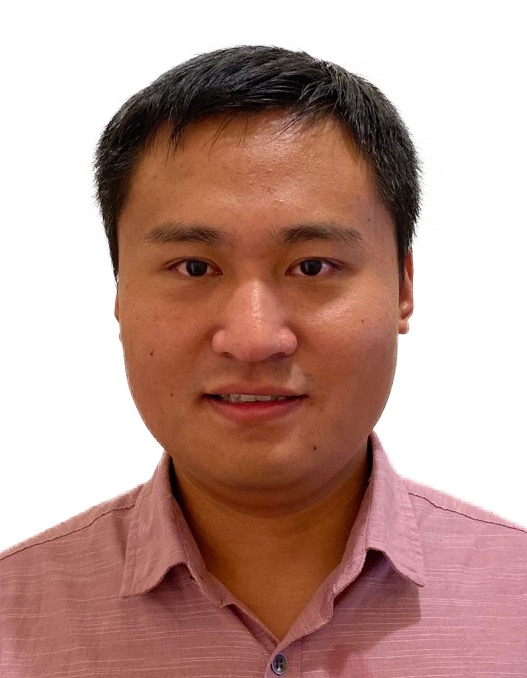 |
|
Organizers: Mauro Maggioni, Fei Lu. Contacts us if you would like to meet with the speakers. |
| The Data Science Seminar will be held on ZOOM and/or in-person (see location for each talk) at 3:00-4:00pm EST on Wednesdays. Meeting ID: 936 4120 5752 Passcode: 507989 |
|
Sep.7
In person, Krieger 411
Weiqi Chu
Department of Mathematics, UCLA
Opinion dynamics models on networks and their mean-field description
The perspectives and opinions of people change and spread through social interactions on a daily basis. In the study of opinion dynamics on networks, one often models entities as nodes and their social relationships as edges, and examines how opinions evolve as dynamical processes on networks, including graphs, hypergraphs, multi-layer networks, etc. In this talk, I will review some agent-based opinion dynamics models on graphs and extend one type of models to hypergraphs, whose edges can connect an arbitrary number of nodes and encode interactions that involve three or more nodes. I will also derive a mean-field model using the density description, whose governing equation follows a kinetic equation of Kac type. We prove that the opinion density converges to a sum of Dirac delta measures as time goes to infinity, which means the opinions will always form isolated opinion clusters at equilibrium. |
 |
|
Oct.12
ZOOM
Hoang Tran
Oak Ridge National Laboratory
Black-Box Optimization with a Novel Nonlocal Gradient and Its Applications to Deep Learning
The problem of minimizing multi-modal loss functions with a large number of local optima frequently arises in machine learning and model calibration problems. Since the local gradient points to the direction of the steepest slope in an infinitesimal neighborhood, an optimizer guided by the local gradient is often trapped in a local minimum. To address this issue, we develop a novel nonlocal gradient to skip small local minima by capturing major structures of the loss's landscape in black-box optimization. The nonlocal gradient is defined by a directional Gaussian smoothing (DGS) approach. The key idea of DGS is to conducts 1D long-range exploration with a large smoothing radius along d orthogonal directions in R^d, each of which defines a nonlocal directional derivative as a 1D integral. Such long-range exploration enables the nonlocal gradient to skip small local minima. The d directional derivatives are then assembled to form the nonlocal gradient. We use the Gauss-Hermite quadrature rule to approximate the d 1D integrals to obtain an accurate estimator. The superior performance of our method is demonstrated in several benchmark tests and machine learning problems, including reinforcement learning and exploring the latent space of deep networks. Enabling long-range exploration in minimization of multimodal functions AdaDGS: An adaptive black-box optimization method with a nonlocal directional Gaussian smoothing gradient Model Calibration of the Liquid Mercury Spallation Target using Evolutionary Neural Networks and Sparse Polynomial Expansions
|  |
|
Oct.19
Postponed
Roy Lederman
Department of Statistics and Data Science, Yale University
The Geometry of Molecular Conformations in Cryo-EM
Cryo-Electron Microscopy (cryo-EM) is an imaging technology that is revolutionizing structural biology. Cryo-electron microscopes produce many very noisy two-dimensional projection images of individual frozen molecules; unlike related methods, such as computed tomography (CT), the viewing direction of each particle image is unknown. The unknown directions and extreme noise make the determination of the structure of molecules challenging. While other methods for structure determination, such as x-ray crystallography and NMR, measure ensembles of molecules, cryo-electron microscopes produce images of individual particles. Therefore, cryo-EM could potentially be used to study mixtures of conformations of molecules. We will discuss a range of recent methods for analyzing the geometry of molecular conformations using cryo-EM data and some new issues that arise. |
 |
|
Oct.26
ZOOM
Christos Mavridis
Department of Electrical & Computer Engineering, University of Maryland
Online Deterministic Annealing: Progressive Learning for Cyber-Physical Systems
The continuously increasing interest in intelligent autonomous systems is accentuating the need for new developments on cyber-physical systems that can learn, adapt, and reason. Towards this direction, we will formally analyze the properties of learning as a continuous, dynamic, and adaptive process of such systems, in applications where computational resources are limited, and robustness and interpretability are prioritized. We will focus on the notion of progressive learning: the ability to hierarchically approximate the solution of an optimal decision-making problem given real-time observations from the system and its environment. We will introduce the Online Deterministic Annealing (ODA) algorithm as a gradient-free stochastic optimization method to construct a learning model that progressively increases its complexity as needed, through an intuitive bifurcation phenomenon. We will discuss the properties of robustness and interpretability, and the importance of being able to control the performance-complexity trade-off. Finally, we will showcase its use in constructing supervised, unsupervised, and reinforcement learning algorithms with applications in robotics, multi-agent systems, and communication networks. |
 |
|
Nov.2
Krieger 413
Enrique Mallada
ECE@JHU
Model-Free Analysis of Dynamical Systems Using Recurrent Sets
In this talk, we develop model-free methods for the analysis of dynamical systems using data. Our key insight is to replace the notion of invariance, a core concept in Lyapunov Theory, with the more relaxed notion of recurrence. A set is τ-recurrent (resp. k-recurrent) if every trajectory that starts within the set returns to it after at most τ seconds (resp. k steps). We then leverage the notion of recurrence to develop several analysis tools and algorithms to study dynamical systems. We first consider the problem of learning an inner approximation of the region of attraction (ROA) of an asymptotically stable equilibrium point without an explicit model of the dynamics. We show that a τ-recurrent set containing a stable equilibrium must be a subset of its ROA under mild assumptions. We then leverage this property to develop algorithms that compute inner approximations of the ROA using counter-examples of recurrence that are obtained by sampling finite-length trajectories. Our algorithms process samples sequentially, which allows them to continue being executed even after an initial offline training stage. We will finalize by providing some recent extensions of this work that generalizes Lyapunov's Direct Method to allow for non-decreasing functions to certify stability, and illustrate future directions of research. |
|
Nov.30
ZOOM
Ruoyu Wu
Department of Mathematics, Iowa State University
Graphon mean field systems: large population and long-time asymptotics
We consider heterogeneously interacting diffusive particle systems and their large population limit. The interaction is of mean field type with (random) weights characterized by an underlying graphon. The limit is given by a graphon particle system consisting of independent but heterogeneous nonlinear diffusions whose probability distributions are fully coupled. A law of large numbers result is established as the system size increases and the underlying graphons converge. Under suitable convexity assumptions, we show the exponential ergodicity for the system, establish the uniform in time law of large numbers and concentration bounds, and analyze the uniform in time Euler approximation. The precise rate of convergence of the Euler approximation is provided. Based on joint works with Erhan Bayraktar and Suman Chakraborty. |
 |
|
Organizers: Mauro Maggioni, Fei Lu, Marie-Jose Kuffner, and Christian Kümmerle. Contacts us if you would like to meet with the speakers. |
| The Data Science seminar will be held on ZOOM and/or in-person at at 3:00-4:00pm EST on Wednesdays. Meeting ID: 936 4120 5752 Passcode: 507989 |
|
Feb.23
Zoom
Evelyn Lunasin
United States Naval Academy
An Efficient Continuous Data Assimilation Algorithm for the Sabra Shell Model of Turbulence
Complex nonlinear turbulent dynamical systems are ubiquitous in many areas of research. Recovering unobserved state variables is an important topic for the data assimilation of turbulent systems. In this talk I will present an efficient continuous in time data assimilation scheme which exploits closed analytic formulae for updating the unobserved state variables. It is computationally efficient and accurate. The new data assimilation scheme is combined with a simple reduced order modeling technique that involves a cheap closure approximation and a noise inflation. In such a way, many complicated turbulent dynamical systems can satisfy the requirements of the mathematical structures for the proposed efficient data assimilation scheme. The new data assimilation scheme is then applied to the Sabra shell model, which is a conceptual model for nonlinear turbulence. The goal is to recover the unobserved shell velocities across different spatial scales. It is shown that the new data assimilation scheme is skillful in capturing the nonlinear features of turbulence including the intermittency and extreme events in both the chaotic and the turbulent dynamical regimes. It is also shown that the new data assimilation scheme is more accurate and computationally cheaper than the standard ensemble Kalman filter and nudging data assimilation schemes for assimilating the Sabra shell model with partial observations. This is joint work with Nan Chen and Yuchen Li. . |
|
March 2
Zoom
Katy Craig
University of California, Santa Barbara Graph Clustering Dynamics: From Spectral to Mean Shift
Clustering algorithms based on mean shift or spectral methods on graphs are ubiquitous in data analysis. However, in practice, these two types of algorithms are treated as conceptually disjoint: mean shift clusters based on the density of a dataset, while spectral methods allow for clustering based on geometry. In joint work with Nicolás García Trillos and Dejan Slepcev, we define a new notion of Fokker-Planck equation on graph and use this to introduce an algorithm that interpolates between mean shift and spectral approaches, enabling it to cluster based on both the density and geometry of a dataset. We illustrate the benefits of this approach in numerical examples and contrast it with Coifman and Lafon’s well-known method of diffusion maps, which can also be thought of as a Fokker-Planck equation on a graph, though one that degenerates in the zero diffusion limit. |
 |
|
March 16
Hybrid in Shaffer 301 and on Zoom
Clément Royer
University Paris-Dauphine Numerical optimization methods with complexity guarantees for nonconvex data science
Nonconvex optimization problems have attracted significant attention from the data science community. Those formulations arise not only in deep learning, but also in data analysis and robust statistics. As a result, these instances come with a great amount of structure, that can be leveraged for optimization purposes. For such problems, the optimization landscape is often completely characterized by means of the first- and second-order derivatives. Consequently, the development of optimization routines based on those derivatives has become an important area of research, wherein the theoretical efficiency of a method is typically measured by deriving complexity bounds, or convergence rates. Such guarantees quantify the effort required to reach an approximate solution, and are often used to compare optimization schemes. On the other hand, approaches that achieve the best theoretical results tend to depart from standard optimization frameworks, and may even by outperformed by textbook algorithms in practice. In this talk, we revisit popular numerical optimization frameworks to equip them with complexity guarantees while maintaining their practical appeal, as evidenced on certain data science problems. The first part of the talk concerns nonlinear conjugate gradient methods. Through a careful complexity analysis, we are able to identify a regime in which nonlinear conjugate gradient achieves a better complexity than gradient descent on nonconvex problems. Our experiments on nonconvex robust regression suggest that this regime is actually met in practice, thus partially explaining the superior performance of nonlinear conjugate gradient on these instances. In the second part of the talk, we study Newton-Conjugate Gradient techniques, and describe a framework equipped with the best-known complexity guarantees for nonconvex optimization that hews close to the classical algorithm, and illustrate the practical impact of enforcing these guarantees. We then propose a variant of this method tailored to specific nonconvex optimization landscapes, for which even stronger results can be derived. Finally, if time permits, we will also discuss nonconvex problems arising in the development of neural network architectures, and the guarantees that can be sought for on such instances. |
|
|
April 6
Recording pwd: DSS@JHU0406
Hybrid in Shaffer 301 and on Zoom
Matthew Levine
Caltech A Framework for Machine Learning of Model Error in Dynamical Systems
The development of data-informed predictive models for dynamical systems is of widespread interest in many disciplines. Here, we present a unifying framework for blending mechanistic and machine-learning approaches for identifying dynamical systems from data. This framework is agnostic to the chosen machine learning model parameterization, and casts the problem in both continuous- and discrete-time. We will also show recent developments that allow these methods to learn from noisy, partial observations. We first study model error from the learning theory perspective, defining the excess risk and generalization error. For a linear model of the error used to learn about ergodic dynamical systems, both excess risk and generalization error are bounded by terms that diminish with the square-root of T (the length of the training trajectory data). In our numerical examples, we first study an idealized, fully-observed Lorenz system with model error, and demonstrate that hybrid methods substantially outperform solely data-driven and solely mechanistic-approaches. Then, we present recent results for modeling partially observed Lorenz dynamics that leverages both data assimilation and neural differential equations. Joint work with Andrew Stuart. |
|
|
April 13
Recording pwd: DSS@JHU0413
Hybrid in Shaffer 301 and on Zoom
Salar Fattahi
University of Michigan Convergence of Subgradient Method in Factorized Models: Small Initialization, Noisy Measurements, and Over-parameterization
Factorized models, from low-rank matrix recovery to deep neural networks, play a central role in many modern machine learning problems. Despite their widespread applications, problems based factorized models are difficult to solve in their worst case due to their inherent nonconvexity--a fact noted as early as the 1980s. Our talk is inspired by the recent observations in the optimization and machine learning community that, despite their nonconvexity, many realistic and practical instances of factorized models are far from their worst case scenarios. We study a natural nonconvex and nonsmooth formulation of two prototypical factorized models, namely low-rank matrix factorization and deep linear regression, where the goal is to recover a low-dimensional model from a limited number of measurements, a subset of which may be grossly corrupted with noise. We study a scenario where the dimension of the true solution is unknown and over-estimated instead. The over-estimation of the dimension gives rise to an over-parameterized model in which there are more degrees of freedom than needed. Such over-parameterization may lead to overfitting, or adversely affect the performance of the algorithm. We prove that a simple subgradient method (SubGM) with small initialization is agnostic to both over-parameterization and noise in the measurements. In particular, we provide the first unifying framework for analyzing the behavior of subgradient method under different noise models, showing that it converges to the true solution, even under arbitrarily large and arbitrarily dense noise values, and--perhaps surprisingly--even if the globally optimal solutions do not correspond to the ground truth. Finally, we study the effect of depth on the local landscape of the factorized models, showing that deeper models enjoy a flatter landscape around ground truth. |
 |
|
April 20
Hybrid in Shaffer 1 and on Zoom
Terry Lyons
University of Oxford Rough paths and streamed data - current challenges
The mathematics of rough paths began as an approach to extending calculus to address the interactions between highly oscillatory streams. The methods come from geometry of Chen and the analysis of Young. A key step involved is the representation of unparameterized paths as elements of the tensor algebra. Today this representation or feature set is having a significant impact on the data science of streamed data. |
 |
|
April 27 Recording pwd: DSS@JHU0427
Hybrid in Shaffer 301 and on Zoom
Amarjit Budhiraja
University of North Carolina at Chapel Hill Numerical Approaches for Computing Quasi-stationary Distributions
Markov processes with absorbing states occur frequently in epidemiology, statistical physics, population biology, and other areas. Quasi-stationary distributions (QSD) are the basic mathematical object used to describe the long-time behavior of such Markov processes on non-absorption events. Just as stationary distributions of ergodic Markov processes make the law of the Markov process, initialized at that distribution, invariant at all times, quasi-stationary distributions are probability measures that leave the conditional law of the Markov process, on the event of non-absorption, invariant. In this talk I will present a couple of numerical approaches for approximating QSD for Markov processes. These approaches use ideas from reinforced random walks, interacting particle systems, and stochastic approximations. The talk is based on joint work with Adam Waterbury. |
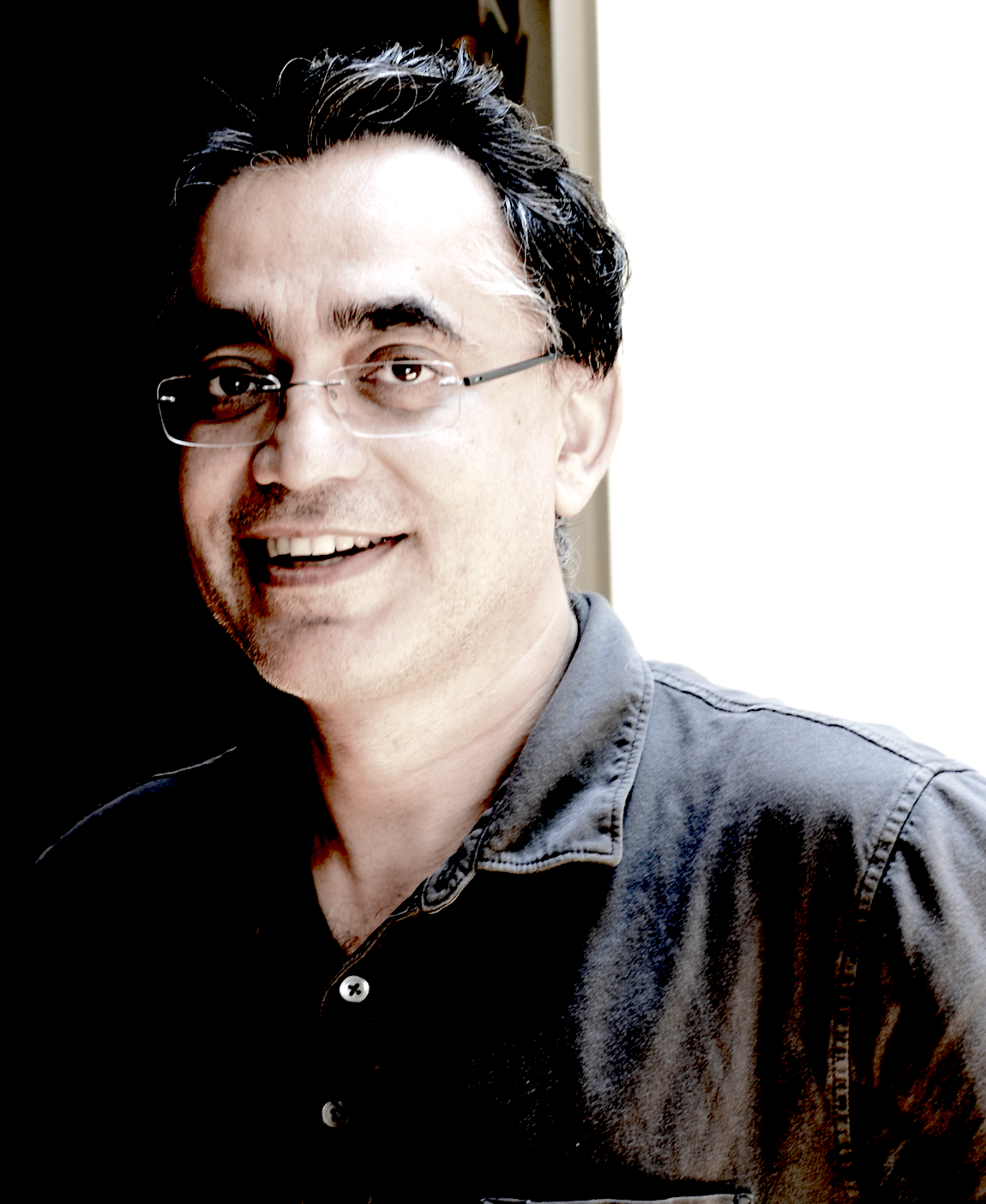 |
|
Organizers: Mauro Maggioni, Fei Lu, Marie-Jose Kuffner, and Christian Kümmerle. Contacts us if you would like to meet with the speakers. |
| The Data Science seminar will be held on ZOOM at at 3:00-4:00pm EST on Wednesdays. Meeting ID: 936 4120 5752 Passcode: 507989 |
|
September 15
Shiqian Ma
UC Davis Riemannian Optimization for Projection Robust Optimal Transport
The optimal transport problem is known to suffer the curse of dimensionality. A recently proposed approach to mitigate the curse of dimensionality is to project the sampled data from the high dimensional probability distribution onto a lower-dimensional subspace, and then compute the optimal transport between the projected data. However, this approach requires solving a max-min problem over the Stiefel manifold, which is very challenging in practice. In this talk, we propose a Riemannian block coordinate descent (RBCD) method to solve this problem. We analyze the complexity of arithmetic operations for RBCD to obtain an $\epsilon$-stationary point, and show that it significantly improves the corresponding complexity of existing methods. Numerical results on both synthetic and real datasets demonstrate that our method is more efficient than existing methods, especially when the number of sampled data is very large. If time permits, we will also talk about the projection robust Wasserstein barycenter problem. |
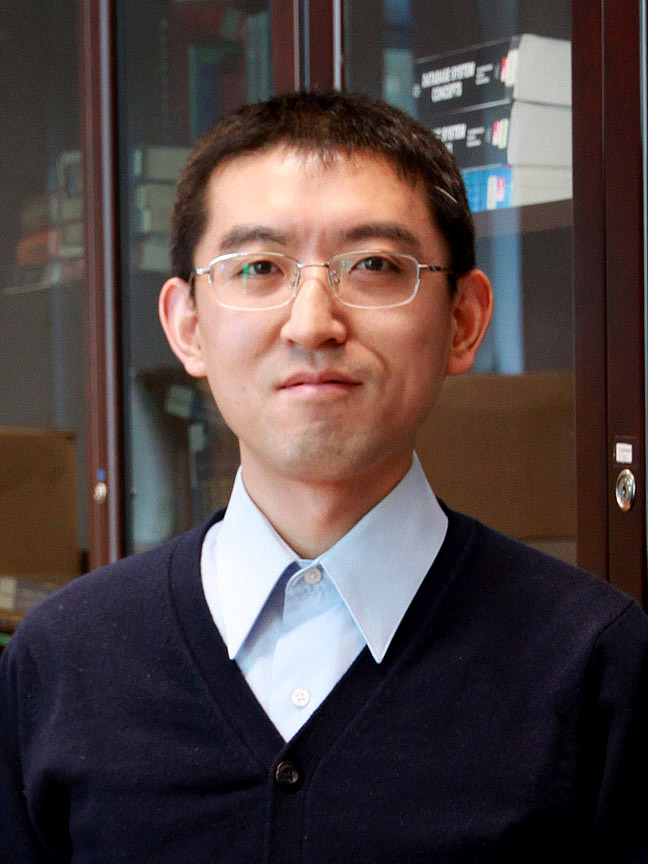 |
|
October 13
Yuxin Chen
Princeton University Inference and Uncertainty Quantification for Low-Rank Models
Many high-dimensional problems involve reconstruction of a low-rank matrix from incomplete and corrupted observations. Despite substantial progress in designing efficient estimation algorithms, it remains largely unclear how to assess the uncertainty of the obtained low-rank estimates, and how to construct valid yet short confidence intervals for the unknown low-rank matrix. In this talk, I will discuss how to perform inference and uncertainty quantification for two examples of low-rank models: (1) noisy matrix completion, and (2) heteroskedastic PCA with Missing Data. For both problems, we identify statistically efficient estimators that admit non-asymptotic distributional characterizations, which in turn enable optimal construction of confidence intervals for, say, the unseen entries of the low-rank matrix of interest. Our inferential procedures do not rely on sample splitting, thus avoiding unnecessary loss of data efficiency. All this is accomplished by a powerful leave-one-out analysis framework that originated from probability and random matrix theory. The first part of my talk is based on joint work with Cong Ma, Yuling Yan and Jianqing Fan, while the second part is based on joint work with Yuling Yan and Jianqing Fan. |
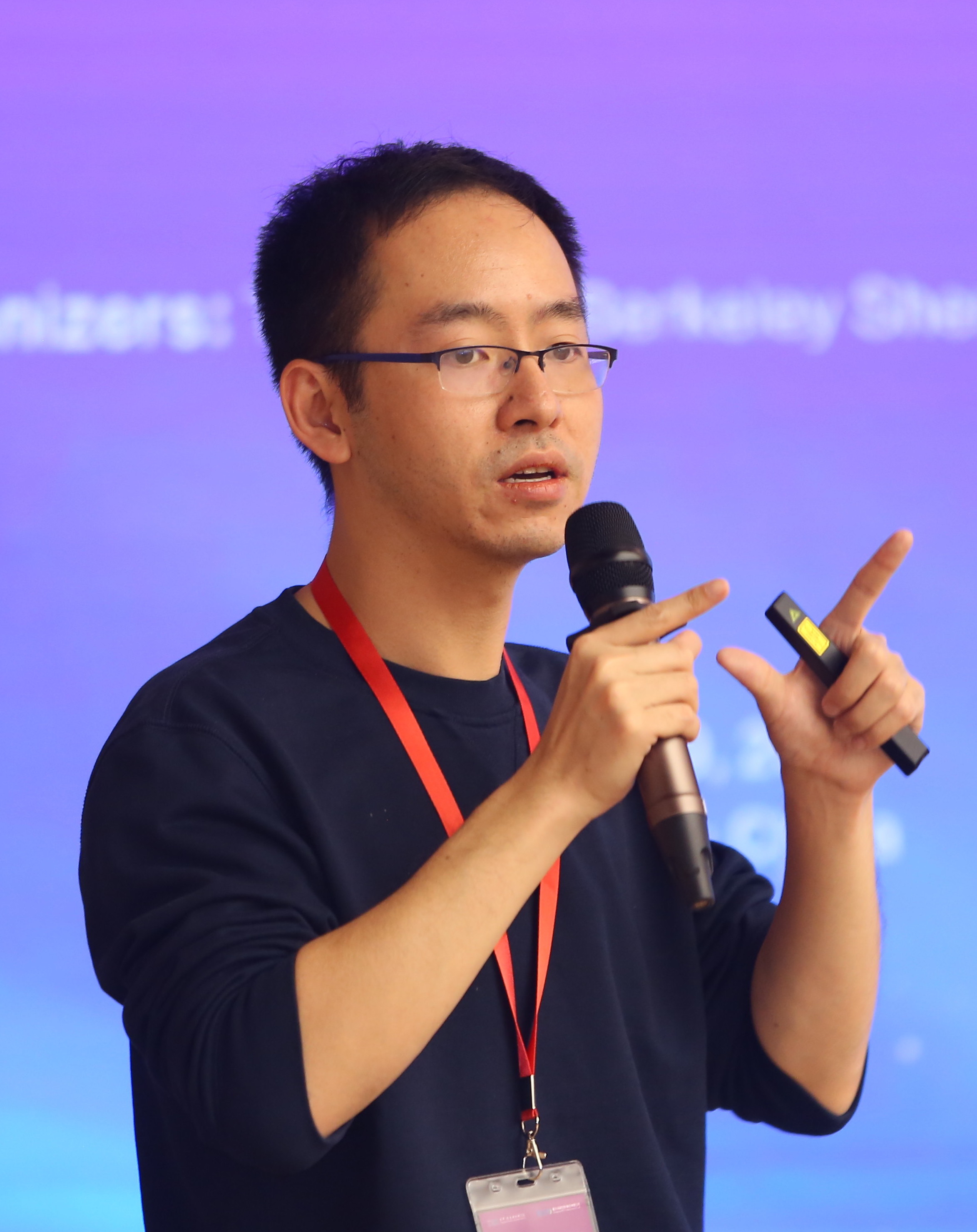 |
|
October 20
Grigorios A. Pavliotis
Imperial College University Optimal Langevin Samplers
Sampling from a probability distribution in a high dimensional spaces is a standard problem in computational statistical mechanics, Bayesian statistics and other applications. A standard approach for doing this is by constructing an appropriate Markov process that is ergodic with respect to the measure from which we wish to sample. In this talk we will present a class of sampling schemes based on Langevin-type stochastic differential equations. We will show, in particular, nonreversible Langevin samplers, i.e. stochastic dynamics that do not satisfy detailed balance, have, in general, better properties than their reversible counterparts, in the sense of accelerating convergence to equilibrium and of reducing the asymptotic variance. Numerical schemes for such nonreversible samplers will be discussed and the connection with nonequilibrium statistical mechanics will be made. |
|
|
October 27, Hybrid: Hodson 316
Thomas Fai
Brandeis University Coarse-grained stochastic model of myosin-driven vesicles into dendritic spines
We model vesicle transport into dendritic spines, which are micron-sized structures located at the postsynapses of neurons characterized by their thin necks and bulbous heads. Recent high-resolution 3D images show that spine morphologies are highly diverse. To study the influence of geometry on transport, our model reduces the fluid dynamics of vesicle motion to two essential parameters representing the system geometry and elasticity. Upon including competing molecular motor species that push and pull on vesicles, the model exhibits multiple steady states that neurons could exploit in order to control the strength of synapses. Moreover, the small numbers of motors lead to random switching between these steady states. We describe a method that incorporates stochasticity into the model to predict the probability and mean time of translocation as a function of spine geometry. |
|
|
Nov. 3
Arnaud Doucet
University of Oxford & DeepMind Diffusion Schrodinger Bridge with Applications to Score-Based Generative Modeling
Progressively applying Gaussian noise transforms complex data distributions to approximately Gaussian. Reversing this dynamic defines a generative model. When the forward noising process is given by a Stochastic Differential Equation (SDE), Song et al. (2021) demonstrate how the time inhomogeneous drift of the associated reverse-time SDE may be estimated using score-matching. A limitation of this approach is that the forward-time SDE must be run for a sufficiently long time for the final distribution to be approximately Gaussian. In contrast, solving the Schrodinger Bridge problem (SB), i.e. an entropy-regularized optimal transport problem on path spaces, yields diffusions which generate samples from the data distribution in finite time. We present Diffusion SB (DSB), an original approximation of the Iterative Proportional Fitting (IPF) procedure to solve the SB problem, and provide theoretical analysis along with generative modeling experiments. The first DSB iteration recovers the methodology proposed by Song et al. (2021), with the flexibility of using shorter time intervals, as subsequent DSB iterations reduce the discrepancy between the final-time marginal of the forward (resp. backward) SDE with respect to the prior (resp. data) distribution. Beyond generative modeling, DSB offers a widely applicable computational optimal transport tool as the continuous state-space analogue of the popular Sinkhorn algorithm (Cuturi, 2013). This is joint work with Valentin De Bortoli, James Thornton and Jeremy Heng. |
|
|
Nov 10, Hybrid: Hodson 316
Paris Perdikaris
University of Pennsylvania Learning to solve parametric PDEs with deep operator networks
Partial differential equations (PDEs) play a central role in the mathematical analysis and modeling of complex dynamic processes across all corners of science and engineering. Their solution often requires laborious analytical or computational tools, associated with a cost that is dramatically amplified when different scenarios need to be investigated, for example corresponding to different initial or boundary conditions, different inputs, etc. In this work we introduce physics-informed DeepONets; a deep learning framework for learning the solution operator of arbitrary PDEs, even in the absence of any paired input-output training data. We illustrate the effectiveness of the proposed framework in rapidly predicting the solution of various types of parametric PDEs up to three orders of magnitude faster compared to conventional PDE solvers, setting a new paradigm for modeling and simulation of non-linear and non-equilibrium processes in science and engineering. |
|
|
Special time 4pm, Dec. 1
Madeleine Udell
Cornell University Detecting equivalence between iterative algorithms for optimization
When are two algorithms the same? How can we be sure a recently proposed algorithm is novel, and not a minor twist on an existing method? In this talk, we present a framework for reasoning about equivalence between a broad class of iterative algorithms, with a focus on algorithms designed for convex optimization. We propose several notions of what it means for two algorithms to be equivalent, and provide computationally tractable means to detect equivalence. Our main definition, oracle equivalence, states that two algorithms are equivalent if they result in the same sequence of calls to the function oracles (for suitable initialization). Borrowing from control theory, we use state-space realizations to represent algorithms and characterize algorithm equivalence via transfer functions. Our framework can also identify and characterize some algorithm transformations including permutations of the update equations, repetition of the iteration, and conjugation of some of the function oracles in the algorithm. A software package named Linnaeus implements the framework and makes it easy to find other iterative algorithms that are equivalent to an input algorithm. More broadly, this framework and software advances the goal of making mathematics searchable. This is based on joint work with Shipu Zhao and Laurent Lessard. |
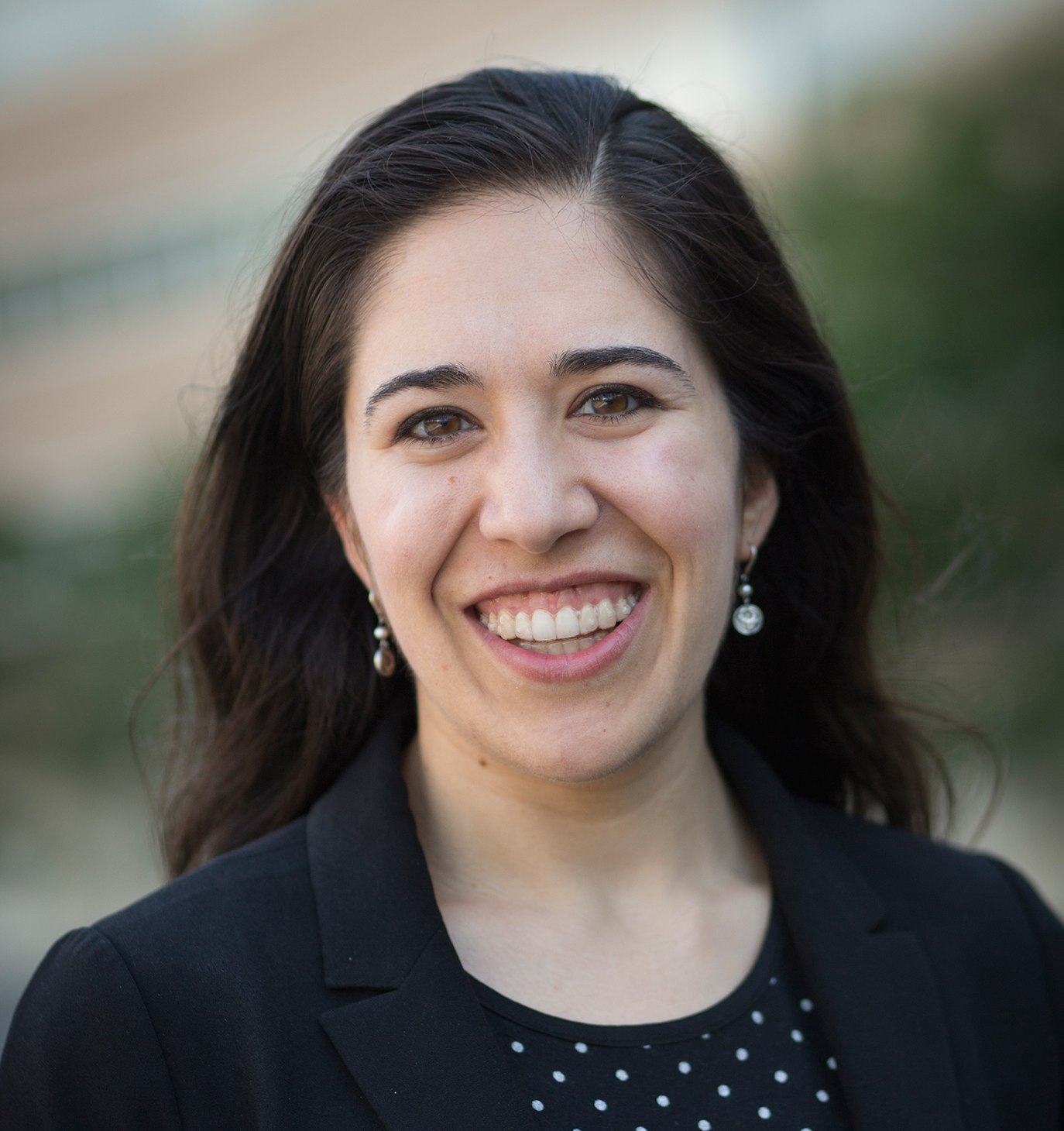 |
|
Organizers: Mauro Maggioni, Fei Lu, Sui Tang, Felix (Xiaofeng) Ye, and Ming Zhong. Contacts us if you would like to meet with the speakers. |
| The Data Science seminar will be held at Maryland Hall 309 at 3:00-4:00pm on Wednesdays, unless otherwise specified. |
|
Postponed, date TBD
David F. Anderson
University of Wisconsin Network structure and dynamics for biochemical reaction networks
Models of cellular processes are often represented with networks that describe the interactions between the constituent molecules. The mathematical study of how dynamical properties of a system relate to graphical properties of its associated network often goes by the name "reaction network theory". In this talk, I will connect some of the classical results of reaction network theory, including the Deficiency Zero Theorem and its analog in the stochastic setting, with some current results at the interface of synthetic biology and mathematics. Topics will include: (i) a characterization of when a stochastic model will admit a time-dependent distribution that is a product of Poissons and (ii) designing reaction networks that admit a particular (marginal) stationary distribution. |
 |
|
Cancelled due to COVID 19.
Eitan Tadmor
University of Maryland Emergent Behavior in Collective Dynamics
A fascinating aspect of collective dynamics is the self-organization of small-scales and their emergence as higher-order patterns -- clusters, flocks, tissues, parties. The emergence of different patterns can be described in terms of few fundamental ''rules of interactions''. I will discuss recent results of the large-time, large-crowd dynamics, driven by anticipation that tend to align the crowd, while other pairwise interactions keep the crowd together and prevent over-crowding. In particular, I address the question how short-range interactions lead to the emergence of long-range patterns, comparing different rules of interactions based on geometric vs. topological neighborhoods. |
 |
|
Cancelled due to COVID 19. April 8
Paris Perdikaris
University of Pennsylvania |
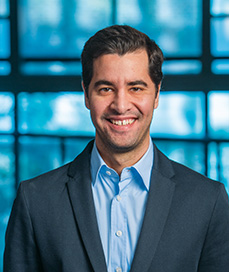 |
|
Cancelled due to COVID 19.
April 22
Evelyn Lunasin
U.S. Naval Academy TBD
TBD. |
|
|
Organizers: Mauro Maggioni, Fei Lu, Sui Tang, Felix (Xiaofeng) Ye, and Ming Zhong. Contacts us if you would like to meet with the speakers. |
|
The Data Science seminar will be held at Maryland Hall 109 at 3:00-4:00pm on Wednesdays, unless otherwise specified. |
|
Sep. 11th
Tingran Gao
University of Chicago Multi-Representation Manifold Learning on Fibre Bundles
Fibre bundles serve as a natural geometric setting for many learning problems involving non-scalar pairwise interactions. Modeled on a fixed principal bundle, different irreducible representations of the structural group induce many associated vector bundles, encoding rich geometric information for the fibre bundle as well as the underlying base manifold. An intuitive example for such a learning paradigm is phase synchronization---the problem of recovering angles from noisy pairwise relative phase measurements---which is prototypical for a large class of imaging problems in cryogenic electron microscopy (cryo-EM) image analysis. We propose a novel nonconvex optimization formulation for this problem, and develop a simple yet efficient two-stage algorithm that, for the first time, guarantees strong recovery for the phases with high probability. We demonstrate applications of this multi-representation methodology that improve denoising and clustering results for cryo-EM images. This algorithmic framework also extends naturally to general synchronization problems over other compact Lie groups, with a wide spectrum of potential applications. This talk is based on three joint work with Prof. Zhizhen Zhao from UIUC:
Tingran Gao and Zhizhen Zhao, Multi-Frequency Phase Synchronization, Proceedings of the 36th International Conference on Machine Learning, PMLR 97:2132 - 2141, 2019 Tingran Gao, Yifeng Fan, and Zhizhen Zhao, Representation Theoretic Patterns in Multi-Frequency Class Averaging for Three-Dimensional Cryo-Electron Microscopy, arXiv:1906.01082. (2019) Yifeng Fan, Tingran Gao, and Zhizhen Zhao, Unsupervised Co-Learning on G-Manifolds Across Irreducible Representations, arXiv:1906.02707. (2019) |
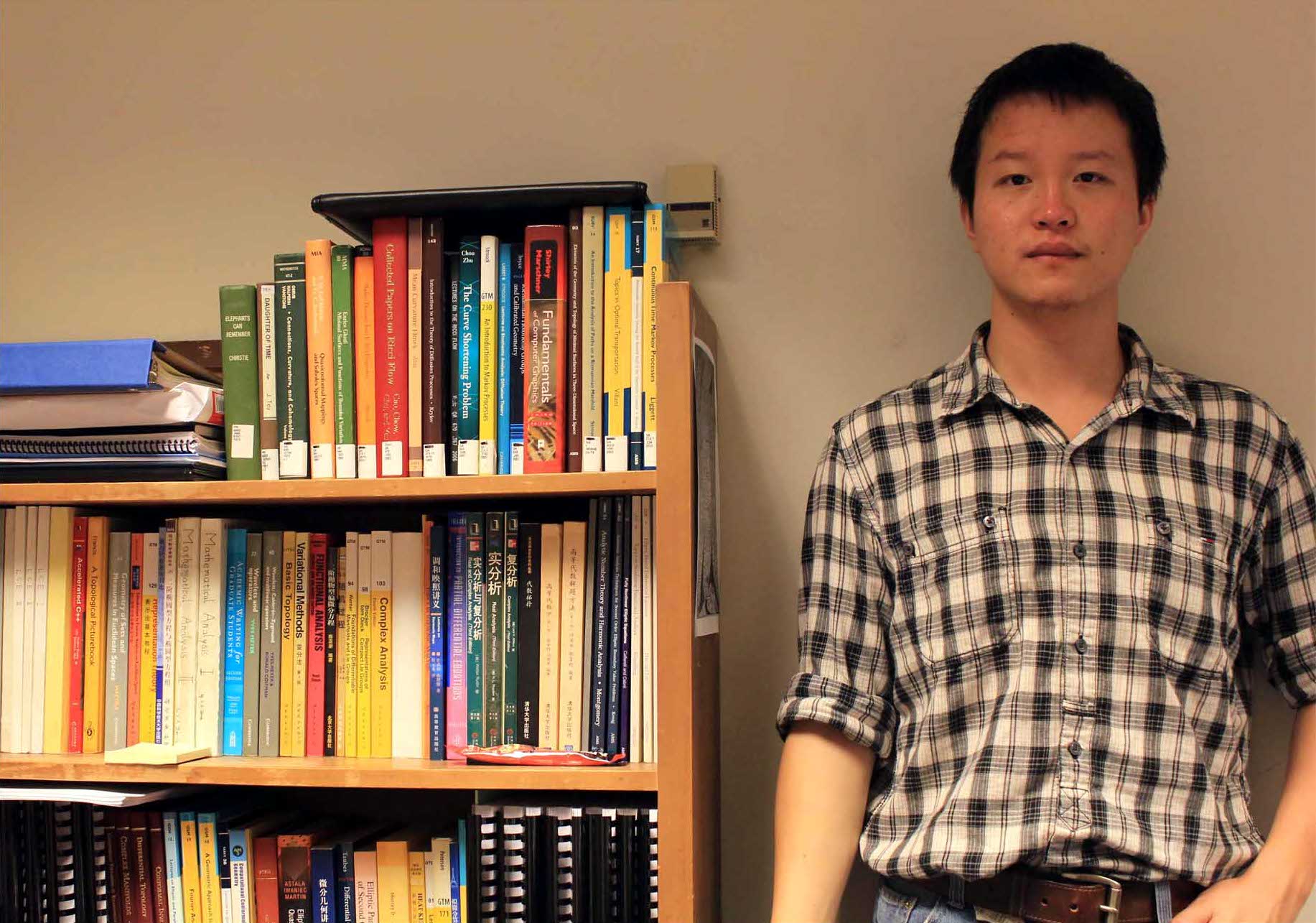 |
|
Sep. 25th, 2019
Anna Little
Michigan State University
Robust Statistical Procedures for Clustering in High Dimensions
This talk addresses multiple topics related to robust statistical procedures for clustering in high dimensions, including path-based spectral clustering (a new method), classical multidimensional scaling (an old method), and clustering in signal processing. Path-based spectral clustering is a novel approach which combines a data driven metric with graph-based clustering. Using a data driven metric allows for fast algorithms and strong theoretical guarantees when clusters concentrate around low-dimensional sets. Another approach to high-dimensional clustering is classical multidimensional scaling (CMDS), a dimension reduction technique widely popular across disciplines due to its simplicity and generality. CMDS followed by a simple clustering algorithm can exactly recover all cluster labels with high probability when the signal to noise ratio is high enough. However, scaling conditions become increasingly restrictive as the ambient dimension increases, illustrating the need for robust unbiasing procedures in high dimensions. Clustering in signal processing is the final topic; in this context each data point corresponds to a corrupted signal. The classic multireference alignment problem is generalized to include random dilation in addition to random translation and additive noise, and a wavelet based approach is used to define an unbiased representation of the target signal(s) which is robust to high frequency perturbations. |
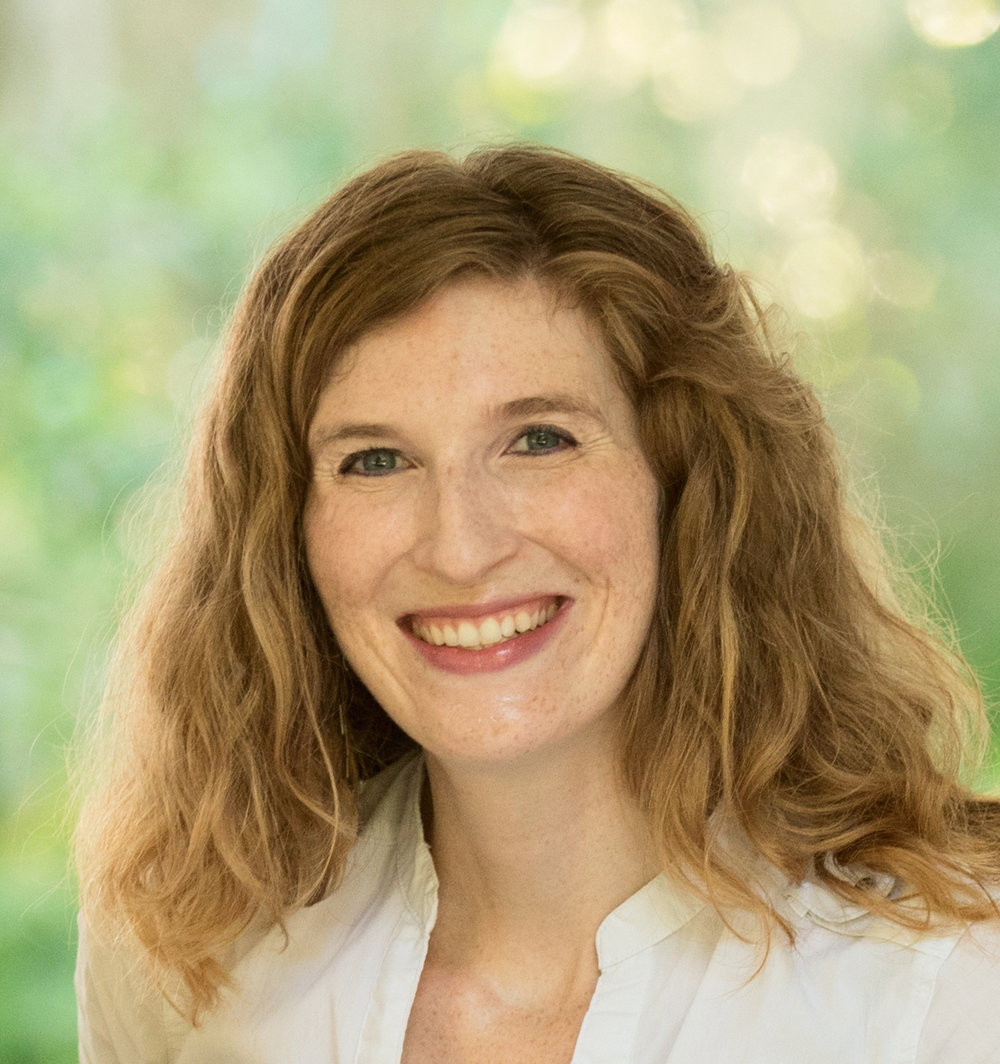 |
|
Oct. 2nd, 2019
Jinqiao Duan
Illinois Institute of Technology Data Science Plus Dynamical Systems: What Can We Learn?
Observational datasets are abundant. Dynamical systems are mathematical models in engineering, medicine and science. Data are noisy and dynamical systems are often under random fluctuations (either Gaussian or non-Gaussian noise). The interactions between data science and dynamical systems are becoming exciting. On the one hand, dynamical systems tools are valuable to extract information from datasets. On the other hand, data science techniques are indispensable for understanding dynamical behaviors with observational data. I will present recent progress on extracting information like the most probable transition pathways, mean residence time, and escape probability from datasets, and on estimating system states and parameters with help of datasets. In addition to highlighting the underlying dynamical systems structures, such as stochastic flows, slow manifolds and dimension reduction, I will outline several mathematical issues at the foundation of relevant machine learning approaches. Relevant papers
The Onsager-Machlup function as Lagrangian for the most probable path of a jump-diffusion process. Discovering mean residence time and escape probability from data of stochastic dynamical systems. Effective Filtering Analysis for Non-Gaussian Dynamic Systems. Dynamical inference for transitions in stochastic systems with alpha-stable Levy noise. More on arXiv.
|
 |
|
Oct. 9th, 2019
Guang Lin
Purdue University Uncertainty Quantification and Machine Learning of the Physical Laws Hidden Behind the Noisy Data
In this talk, we will present three new data-driven, machine-learning based methods for Learning of the physical laws Hidden Behind the noisy data and quantifying the uncertainties in machine learning. First, I will present a new data-driven paradigm on how to quantify the structural uncertainty (model-form uncertainty) and learn the physical laws hidden behind the noisy data in the complex systems governed by partial differential equations. The key idea is to identify the terms in the underlying equations and to approximate the coefficients of the terms with error bars using Bayesian machine learning algorithms on the available noisy measurement. In particular, Bayesian sparse feature selection and parameter estimation are performed. Numerical experiments show the robustness of the learning algorithms with respect to noisy data and size, and its ability to learn various candidate equations with error bars to represent the quantified uncertainty. Second, I will introduce a fast-probabilistic convolutional encoder-decoder network named ConvPDE-UQ for predicting the solutions of heterogeneous elliptic partial differential equations on varied domains. Unlike other approaches, ConvPDE-UQ can quantify the uncertainties in deep-learning-based prediction and allow training to be scaled to the large data sets. Finally, to predict material failure and fracture propagation, we will present a new deep neural network named Peri-Net. |
|
Note date and place: Nov. 7th, 1:30-2:30pm, Whitehead 304 AMS seminar
Jonathan Mattingly
Duke University Computational methods for Quantifying Gerrymandering and other computational statistical mechanics problems
I will describe some of the interesting problems which have arisen around the problem of understanding Gerrymandering. It is a high sampling dimensional problem. I will talk about some basic MCMC schemes and some extensions to both interesting global moves as well as some other generalizations. I will also take a moment to frame the problem and state some open questions. |
|
Nov. 13th, 2019
Le Song
Georgia Institute of Technology Learning Augmented Design of Algorithms
Algorithms are step-by-step instructions designed by humans to solve a problem. However, many data analytics problems are intrinsically hard and complex, making the design of effective algorithms very challenging. Domain experts have to perform extensive research, experiment with many trial-and-errors, and carefully craft some approximation or heuristic schemes in order to design effective algorithms. Previous algorithm design paradigms seldom systematically exploit a common trait of real-world algorithms: instances of the same type of problem are solved again and again on a regular basis using the algorithm, maintaining the same problem structure, but differing mainly in their data. In this talk, I will explain two examples of using learning to augment algorithm design (combinatorial optimization and sparse recovery). The new design paradigm will delegate some difficult design choices in an algorithm to a nonlinear learning model, and use data to figure out the best model/algorithm. I will show that the learned augmented design leads to interesting and effective new algorithms. |
 |
|
Dec. 4th, 2019
Matthew Zahr
University of Notre Dame
Integrating computational physics and numerical optimization to address challenges in computational science, engineering, and medicine
Optimization problems governed by partial differential equations are ubiquitous in modern science, engineering, and mathematics. They play a central role in optimal design and control of multiphysics systems, data assimilation, and inverse problems. However, as the complexity of the underlying PDE increases, efficient and robust methods to accurately compute the objective function and its gradient become paramount. To this end, I will present a globally high-order discretization of PDEs and their quantities of interest and the corresponding fully discrete adjoint method for use in a gradient-based PDE-constrained optimization setting. The framework is applied to solve a several of optimization problems including the design of energetically optimal flapping motions, the design of energy harvesting mechanisms, and data assimilation to dramatically enhance the resolution of magnetic resonance images. In addition, I will demonstrate that the role of optimization in computational physics extends well beyond these traditional design and control problems. I will introduce a new method for the discovery and high-order accurate resolution of shock waves in compressible flows using PDE-constrained optimization techniques. The key feature of this method is an optimization formulation that aims to align discontinuous features of the solution basis with discontinuities in the solution. The method is demonstrated on a number of one- and two-dimensional transonic and supersonic flow problems. In all cases, the framework tracks the discontinuity closely with curved mesh elements and provides accurate solutions on extremely coarse meshes. References
An adjoint method for a high-order discretization of deforming domain conservation laws for optimization of flow problems. An optimization-based approach for high-order accurate discretization of conservation laws with discontinuous solutions. High-order, linearly stable, partitioned solvers for general multiphysics problems based on implicit--explicit Runge--Kutta schemes.
|
 |
|
Organizers: Mauro Maggioni, Fei Lu, Sui Tang, Felix (Xiaofeng) Ye, and Ming Zhong. Contacts us if you would like to meet with the speakers. |
|
The Data Science seminar is merging with the CIS seminar , and it will be in either Mergenthaler 11 or in Clark Hall 316, throughout the semester, on Johns Hopkins Homewood campus this map). As the merging of the two seminar series takes place in Spring 2019, the the schedule of the CIS seminar will remain available and takes precedence over the one below for CIS speakers. |
|
Jan. 29th
Hamed Pirsiavash
UMBC Clark Hall Room 12:15-1:15pm |
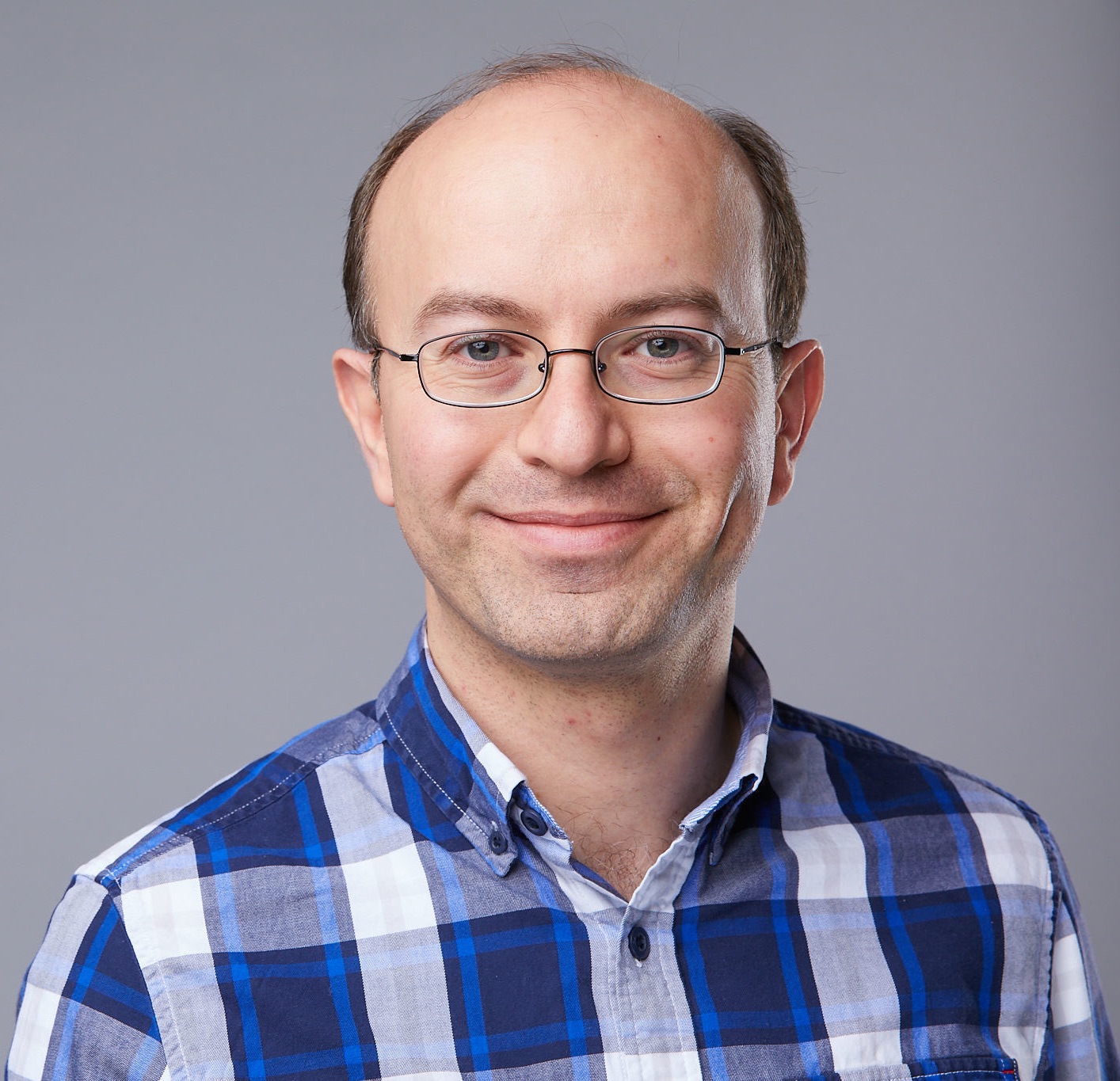 |
|
Feb. 5th, 2019
Ted Satterthwaite
UPenn Clark Hall Room 12:15-1:15pm |
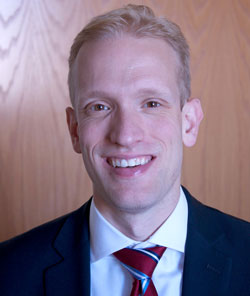 |
|
Feb. 12th, 2019
Yanxun Xu
Johns Hopkins University Clark Hall Room 110, 1pm-2pm (light lunch served at 12:30pm) Bayesian Estimation of Sparse Spiked Covariance Matrices in High Dimensions
Abstract: We propose a Bayesian methodology for estimating spiked covariance matrices with jointly sparse structure in high dimensions. The spiked covariance matrix is reparametrized in terms of the latent factor model, where the loading matrix is equipped with a novel matrix spike-and-slab LASSO prior, which is a continuous shrinkage prior for modeling jointly sparse matrices. We establish the rate-optimal posterior contraction for the covariance matrix with respect to the operator norm as well as that for the principal subspace with respect to the projection operator norm loss. We also study the posterior contraction rate of the principal subspace with respect to the two-to-infinity norm loss, a novel loss function measuring the distance between subspaces that is able to capture element-wise eigenvector perturbations. We show that the posterior contraction rate with respect to the two-to-infinity norm loss is tighter than that with respect to the routinely used projection operator norm loss under certain low-rank and bounded coherence conditions. In addition, a point estimator for the principal subspace is proposed with the rate-optimal risk bound with respect to the projection operator norm loss. These results are based on a collection of concentration and large deviation inequalities for the matrix spike-and-slab LASSO prior. The numerical performance of the proposed methodology is assessed through synthetic examples and the analysis of a real-world face data example. |
 |
|
April 10, Special time: 3:00-4:00, location: Shaffer 100
Nan Chen
University of Wisconsin-Madison Title: A Conditional Gaussian Framework for Uncertainty Quantification, Data Assimilation and Prediction of Nonlinear Turbulent Dynamical Systems
Abstract: A conditional Gaussian framework for uncertainty quantification, data assimilation and prediction of nonlinear turbulent dynamical systems will be introduced in this talk. Despite the conditional Gaussianity, the dynamics remain highly nonlinear and are able to capture strongly non-Gaussian features such as intermittency and extreme events. The conditional Gaussian structure allows efficient and analytically solvable conditional statistics that facilitates the real-time data assimilation and prediction. This talk will include three applications of such conditional Gaussian framework. The first part regards the state estimation and data assimilation of multiscale and turbulent ocean flows using noisy Lagrangian tracers. Rigorous analysis shows that an exponential increase in the number of tracers is required for reducing the uncertainty by a fixed amount. This indicates a practical information barrier. In the second part, an efficient statistically accurate algorithm is developed that is able to solve a rich class of high-dimensional Fokker-Planck equation with strong non-Gaussian features and beat the curse of dimensions. In the last part of this talk, a physics-constrained nonlinear stochastic model is developed, and is applied to predicting the Madden-Julian oscillation indices with strongly non-Gaussian intermittent features. Related papers:
|
 |
|
May 31st, Special time: 3:00-4:00, location: Whitehead 304
Jinchao Feng
University of Massachusetts - Amherst Title: Model-Form Uncertainty Quantification for Predictive Modeling in Probabilistic Graphical Models
Abstract: Probabilistic Graphical Models (PGM) is an important class of methods for probabilistic modeling and inference, and constitutes the mathematical foundation of modeling uncertainty in Artificial Intelligence (AI). Its hierarchical structure allows us to bring together in a systematic way statistical and multi-scale physical modeling, different types of data, incorporating in expert knowledge, correlations and causal relationships. However, due to multi-scale modeling, learning from sparse data, and mechanisms without full knowledge, many predictive models will necessarily have diverse sources of uncertainty at different scales. On the other hand, traditional Uncertainty Quantification (UQ) methods mostly consider parametric approaches, e.g., by perturbing, tuning, or inferring the model parameters, which are not suitable for the aforementioned models. For this type of model-form (epistemic) uncertainty we develop a new information-theoretic, nonparametric approach for UQ. We develop new model-form UQ indices that can handle both parametric and non-parametric PGMs, as well as small and large model/parameter perturbations in a single, unified mathematical framework and provide an envelope of model predictions for our quantities of interests (QoIs). Moreover, we propose a model-form Sensitivity Index, which allows us to rank the impact of each component of the PGM, and provide a systematic methodology to close the experiment - model - simulation - prediction loop and improve the computational model iteratively based on our new UQ and SA methods. Related papers:
|
 |
|
Organizers: Mauro Maggioni, Fei Lu. Contacts us if you would like to meet with the speakers. |
| The data seminar will take place on Wednesdays at 3pm, in Shaeffer 304, during the semester, on Johns Hopkins Homewood campus this map). |
|
October 10
Jianfeng Lu
Duke Title: Solving large-scale leading eigenvalue problem
Abstract: The leading eigenvalue problems arise in many applications. When the dimension of the matrix is super huge, such as for applications in quantum many-body problems, conventional algorithms become impractical due to computational and memory complexity. In this talk, we will describe some recent works on new algorithms for the leading eigenvalue problems based on randomized and coordinate-wise methods (joint work with Yingzhou Li and Zhe Wang). |
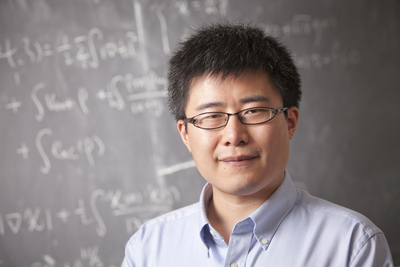 |
| November 6, Special time: 4:00-5:00, location: Gilman 277
Mohammad Farazmand
Department of Mechanical Engineering, MIT Title: Extreme Events: Dynamics, Prediction and Mitigation
Abstract: A wide range of natural and engineering systems exhibit extreme events, i.e., spontaneous intermittent behavior manifested through sporadic bursts in the time series of their observables. Examples include ocean rogue waves, intermittency in turbulence and extreme weather patterns. Because of their undesirable impact on the system or the surrounding environment, the real-time prediction and mitigation of extreme events is of great interest. In this talk, I discuss some recent advances in the quantification and prediction of extreme events. In particular, I introduce a variational method that disentangles the mechanisms underpinning the formation of extreme events. This in turn enables the data-driven, real-time prediction of the extreme events. I demonstrate the application of this method with several examples including the prediction of ocean rogue waves and the intermittent energy dissipation bursts in turbulent fluid flows. |
 |
|
November 7
Kevin Lin
School of Mathematical Science, University of Arizona Title: Mori-Zwanzig formalism and discrete-time modeling of chaotic
dynamics
Abstract: Nonlinear dynamic phenomena often require a large number of dynamical variables to model, only a small fraction of which are of direct interest. Reduced models that use only the relevant dynamical variables can be very useful in such situations, both for computational efficiency and insights into the dynamics. Recent work has shown that the NARMAX (Nonlinear Auto-Regressive Moving-Average with eXogenous inputs) representation of stochastic processes provides an effective basis for parametric model reduction in a number of concrete settings [Chorin-Lu PNAS 2015]. In this talk, I will review some of these developments, then explain how the NARMAX method can be seen as a special case of a general theoretical framework for model reduction due to Mori and Zwanzig. These ideas will be illustrated on a prototypical model of spatiotemporal chaos. Related papers:
Preprint available upon request (please write to [email protected]) Data-based stochastic model reduction for the Kuramoto--Sivashinsky equation Comparison of continuous and discrete-time data-based modeling for hypoelliptic systems |
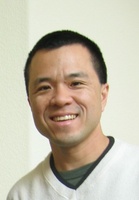 |
|
December 5
Clarence Rowley
Princeton University Title: Structure, stability, and simplicity in complex fluid flows
Abstract: Fluid flows can be extraordinarily complex, and even turbulent, yet often there is structure lying within the apparent complexity. Understanding this structure can help explain observed physical phenomena, and can help with the design of control strategies in situations where one would like to change the natural state of a flow. This talk addresses techniques for obtaining simple, approximate models for fluid flows, using data from simulations or experiments. We discuss a number of methods, including balanced truncation, linear stability theory, and dynamic mode decomposition, and apply them to several flows with complex behavior, including a transitional channel flow, a jet in crossflow, and a T-junction in a pipe. |
 |
| December 10, Special time: 12:00-1:00, location: Shaffer 304
Marina Meila
Department of Statistics, University of Washington Title: Unsupervised Validation for Unsupervised Learning
Abstract: Scientific research involves finding patterns in data, formulating hypotheses, and validating them with new observations. Machine learning is many times faster than humans at finding patterns, yet the task of validating these as "significant" is still left to the human expert or to further experiment. In this talk I will present a few instances in which unsupervised machine learning tasks can be augmented with data driven validation. In the case of clustering, I will demonstrate a new framework of "proving" that a clustering is approximately correct, that does not require a user to know anything about the data distribution. This framework has some similarities to PAC bounds in supervised learning; unlike PAC bounds, the bounds for clustering can be calculated exactly and can be of direct practical utility. In the case of non-linear dimension reduction by manifold learning, I will present a way around the following problem. It is widely recognized that the low dimensional embeddings obtained with manifold learning algorithms distort the geometric properties of the original data, like distances and angles. These algorithm dependent distortions make it unsafe to pipeline the output of a manifold learning algorithm into other data analysis algorithms, limiting the use of these techniques in engineering and the sciences. Our contribution is a statistically founded methodology to estimate and then cancel out the distortions introduced by any embedding algorithm, thus effectively preserving the distances in the original data. This method is based on augmenting the output of a manifold learning algorithm with "the pushforward Riemannian metric", i.e. with additional metric information that allows it to reconstruct the original geometry. Joint work with Dominique Perrault-Joncas, James McQueen, Jacob VanderPlas, Grace Telford, Yu-chia Chen, Samson Koelle |
 |
|
Organizers: Mauro Maggioni, Fei Lu. Contacts us if you would like to meet with the speakers. |
|
The data seminar will take place on Wednesdays at 3pm, in Shaeffer 304, during the semester, on Johns Hopkins Homewood campus this map). |
|
Special Time: 11am and Location: Krieger 413; January 25th
Xiaofeng (Felix) Ye
University of Washington Title: Stochastic dynamics: Markov chains and random transformations
Abstract: The theory of stochastic dynamics has two different mathematical representations: stochastic processes and random dynamical system (RDS). RDS actually is a more refined mathematical description of the reality; it provides not only stochastic trajectories following one initial condition, but also describes how the entire phase space, with all initial conditions, changes with time. Stochastic processes represent the stochastic movements of individual systems. RDS, however, describes the motions of many systems that experience a common deterministic law that is changing with time due to extrinsic noises, which represent a fluctuating environment or complex external singles. The RDS is often a good framework to study a quite counterintuitive phenomenon called noise-induced synchronization: the stochastic motions of noninteracting systems under a common noise synchronize; their trajectories become close to each other, while individual one remains stochastic. I first established some elementary contradistinctions between Markov chain theory and RDS descriptions of a stochastic dynamical system under discrete time, discrete state (dtds) setting. It was shown that a given Markov chain is compatible with many possible RDS, and I particularly studied the corresponding RDS with maximum metric entropy. I then proved the sufficient and necessary conditions for synchronization in general dtds-RDS and in dtds-RDS with maximum metric entropy. The work is based on the observation that under certain mild conditions, the forward probability in a hidden Markov model exhibits synchronization, which yields an efficient estimation with subsequences. Here I developed a mini-batch gradient descent algorithm for parameter inference in the hidden Markov model. I first efficiently estimated the rate of synchronization, which was proven as the gap of top Lyapunov exponents, and then fully utilized it to approximate the length of subsequences in the mini-batch algorithm. I theoretically validated the algorithm and numerically demonstrated the effectiveness. |
 |
|
January 31st
Tom Goldstein
University of Maryland Title: Principled non-convex optimization for deep learning and phase retrieval
Abstract: This talk looks at two classes of non-convex problems. First, we discuss phase retrieval problems, and present a new formulation, called PhaseMax, that reduces this class of non-convex problems into a convex linear program. Then, we turn our attention to more complex non-convex problems that arise in deep learning. We'll explore the non-convex structure of deep networks using a range of visualization methods. Finally, we discuss a class of principled algorithms for training "binarized" neural networks, and show that these algorithms have theoretical properties that enable them to overcome the non-convexities present in neural loss functions. |
 |
|
February 21st
Dimitris Giannakis
NYU Title:Data-driven modeling of vector fields and differential forms by spectral exterior calculus
Abstract: We discuss a data-driven framework for exterior calculus on manifolds. This framework is based on a representations of vector fields, differential forms, and operators acting on these objects in frames (overcomplete bases) for L^2 and higher-order Sobolev spaces built entirely from the eigenvalues and eigenfunctions of the Laplacian of functions. Using this approach, we represent vector fields either as linear combinations of frame elements, or as operators on functions via matrices. In addition, we construct a Galerkin approximation scheme for the eigenvalue problem for the Laplace-de-Rham operator on 1-forms, and establish its spectral convergence. We present applications of this scheme to a variety of examples involving data sampled on smooth manifolds and the Lorenz 63 fractal attractor. This work is in collaboration with Tyrus Berry. |
 |
|
March 14th
Edriss Titi
Texas A&M University, and The Weizmann Institute of Science Title: Data Assimilation and Feedback Control Algorithm for Dissipative Evolution Models Employing Coarse Mesh Observables
Abstract: One of the main characteristics of infinite-dimensional dissipative evolution equations, such as the Navier-Stokes equations and reaction-diffusion systems, is that their long-time dynamics is determined by finitely many parameters -- finite number of determining modes, nodes, volume elements and other determining interpolants. In this talk I will show how to explore this finite-dimensional feature of the long-time behavior of infinite-dimensional dissipative systems to design finite-dimensional feedback control for stabilizing their solutions. Notably, it is observed that this very same approach can be implemented for designing data assimilation algorithms of weather prediction based on discrete measurements. In addition, and if time allows, I will also show that the long-time dynamics of the Navier-Stokes equations can be imbedded in an infinite-dimensional dynamical system that is induced by an ordinary differential equations, named {\it determining form}, which is governed by a globally Lipschitz vector field.Remarkably, as a result of this machinery I will eventually show that the global dynamics of the Navier-Stokes equations is be determining by only one parameter that is governed by an ODE. The Navier-Stokes equations are used as an illustrative example, and all the above mentioned results equally hold to other dissipative evolution PDEs, in particular to various dissipative reaction-diffusion systems and geophysical models. This is a joint work with A. Azouani, H. Bessaih, A. Farhat, C. Foias, M. Jolly, R. Kravchenko, E. Lunasin and E. Olson |
 |
|
March 28th
Rama Chellappa
University of Maryland, College Park Title: Learning Along the Edge of Deep Networks
Abstract: While Deep Convolutional Neural Networks (DCNNs) have achieved impressive results on many detection and classification tasks (for example, unconstrained face detection, verification and recognition), it is still unclear why they perform so well and how to properly design them. It is widely recognized that while training deep networks, an abundance of training samples is required. These training samples need to be lossless, perfectly labeled, and spanning various classes in a balanced way. The generalization performance of designed networks and their robustness to adversarial examples needs to be improved too. In this talk, we analyze each of these individual conditions to understand their effects on the performance of deep networks and present mitigation strategies when the ideal conditions are not met. First, we investigate the relationship between the performance of a convolutional neural network (CNN), its depth, and the size of its training set and present performance bounds on CNNs with respect to the network parameters and the size of the available training dataset. Next, we consider the task of adaptively finding optimal training subsets which will be iteratively presented to the DCNN. We present convex optimization methods, based on an objective criterion and a quantitative measure of the current performance of the classifier, to efficiently identify informative samples to train on. Then we present Defense-GAN, a new strategy that leverages the expressive capability of generative models to defend DCNNs against adversarial attacks. The Defense-GAN can be used with any classification model and does not modify the classifier structure or training procedure. It can also be used as a defense against any attack as it does not assume knowledge of the process for generating the adversarial examples. An approach for training a DCNN using compressed data will also be presented by employing the GAN framework. Finally, to address generalization to unlabeled test data and robustness to adversarial samples, we propose an approach that leverages unsupervised data to bring the source and target distributions closer in a learned joint feature space. This is accomplished by inducing a symbiotic relationship between the learned embedding and a generative adversarial network. We demonstrate the impact of the analyses discussed above on a variety of reconstruction and classification problems. |
|
April 18th
Pierre-Emmanuel Jabin
University of Maryland, College Park Title: Complexity of some models of interacting biological neurons
Abstract: We study some models of for the dynamics of large groups of biological neurons: Those typically consist of large coupled systems of ODE's or SDE's, usually implementing some simple form of integrate and fire. The main question that we wish to address concerns the behavior of such networks as the number of neurons increases. Many particle systems (as they are used in physics, or multi-agent systems in general) naturally come to mind, as it is well known in such cases that propagation of chaos (i.e. the almost independence of each agent) can lead to a reduction in complexity through the direct calculation of various macroscopic densities. However the system under consideration here can be seen as multi-agent system with positive reinforcement so that correlations between neurons never vanish. In an ongoing work with D. Poyato, we first study the case where neurons are essentially fully connected. We show that in spite of this simple topology, the networks may exhibit different measures of complexity which can be characterized through the type of initial connections between neurons. Related papers:
On the simulation of large populations of neurons Dynamics of sparsely connected networks of excitatory and inhibitory spiking networks Mean-field theory of irregularly spiking neuronal populations and working memory in recurrent cortical networks The mean field equation for the Kuramoto model on graph sequences with non-Lipschitz limit |
 |
|
Organizers: Mauro Maggioni, Fei Lu, Stefano Vigogna. Contacts us if you would like to meet with the speakers. |
The data seminar will take place on Wednesdays at 3pm, in Hodson Hall 203, during the semester, on Johns Hopkins Homewood campus this map). |
|
September 13th
Yannis Kevrekidis
Bloomberg distinguished Professor, ChemBE, Johns Hopkins University Title: No equations, no variables, no parameters, no space, no time: Data and the computational modeling of complex/multiscale systems
Abstract: Obtaining predictive dynamical equations from data lies at the heart of science and engineering modeling, and is the linchpin of our technology. In mathematical modeling one typically progresses from observations of the world (and some serious thinking!) first to equations for a model, and then to the analysis of the model to make predictions. Good mathematical models give good predictions (and inaccurate ones do not) - but the computational tools for analyzing them are the same: algorithms that are typically based on closed form equations. While the skeleton of the process remains the same, today we witness the development of mathematical techniques that operate directly on observations -data-, and appear to circumvent the serious thinking that goes into selecting variables and parameters and deriving accurate equations. The process then may appear to the user a little like making predictions by "looking in a crystal ball". Yet the "serious thinking" is still there and uses the same -and some new- mathematics: it goes into building algorithms that "jump directly" from data to the analysis of the model (which is now not available in closed form) so as to make predictions. Our work here presents a couple of efforts that illustrate this ``new path from data to predictions. It really is the same old path, but it is travelled by new means. |
 |
|
September 20th
Carey Priebe
Professor, Applied Mathematics and Statistics, Johns Hopkins University Semiparametric spectral modeling of the Drosophila connectome
We present semiparametric spectral modeling of the complete larval Drosophila mushroom body connectome. Motivated by a thorough exploratory data analysis of the network via Gaussian mixture modeling (GMM) in the adjacency spectral embedding (ASE) representation space, we introduce the latent structure model (LSM) for network modeling and inference. LSM is a generalization of the stochastic block model (SBM) and a special case of the random dot product graph (RDPG) latent position model, and is amenable to semiparametric GMM in the ASE representation space. The resulting connectome code derived via semiparametric GMM composed with ASE captures latent connectome structure and elucidates biologically relevant neuronal properties. Related papers:
The complete connectome of a learning and memory center in an insect brain A consistent adjacency spectral embedding for stochastic blockmodel graphs A limit theorem for scaled eigenvectors of random dot product graphs Limit theorems for eigenvectors of the normalized Laplacian for random graphs |
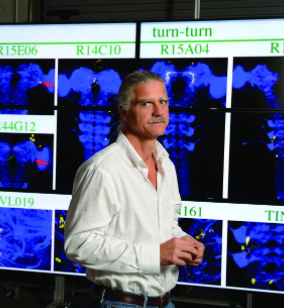 |
|
September 27
John Benedetto
Professor, Department of Mathematics, University of Maryland, College Park and Norbert Wiener Center Frames -- two case studies: ambiguity and uncertainty
The theory of frames is an essential concept for dealing with signal representation in noisy environments. We shall examine the theory in the settings of the narrow band ambiguity function and of quantum information theory. For the ambiguity function, best possible estimates are derived for applicable constant amplitude zero autocorrelation (CAZAC) sequences using Weil's solution of the Riemann hypothesis for finite fields. In extending the theory to the vector-valued case modelling multi-sensor environments, the definition of the ambiguity function is characterized by means of group frames. For the uncertainty principle, Andrew Gleason's measure theoretic theorem, establishing the transition from the lattice interpretation of quantum mechanics to Born's probabilistic interpretation, is generalized in terms of frames to deal with uncertainty principle inequalities beyond Heisenberg's. My collaborators are Travis Andrews, Robert Benedetto, Jeffrey Donatelli, Paul Koprowski, and Joseph Woodworth. Related papers:
Super-resolution by means of Beurling minimal extrapolation Generalized Fourier frames in terms of balayage Uncertainty principles and weighted norm inequalities A frame reconstruction algorithm with applications to magnetric resonance imaging Frame multiplication theory and a vector-valued DFT and ambiguity functions |
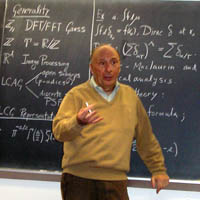 |
|
October 4th
Nathan Kutz
Robert Bolles and Yasuko Endo Professor, Applied Mathematics, University of Washington Data-driven discovery of governing equations and physical laws
The emergence of data methods for the sciences in the last decade has been enabled by the plummeting costs of sensors, computational power, and data storage. Such vast quantities of data afford us new opportunities for data-driven discovery, which has been referred to as the 4th paradigm of scientific discovery. We demonstrate that we can use emerging, large-scale time-series data from modern sensors to directly construct, in an adaptive manner, governing equations, even nonlinear dynamics, that best model the system measured using modern regression techniques. Recent innovations also allow for handling multi-scale physics phenomenon and control protocols in an adaptive and robust way. The overall architecture is equation-free in that the dynamics and control protocols are discovered directly from data acquired from sensors. The theory developed is demonstrated on a number of canonical example problems from physics, biology and engineering. |
 |
|
October 11th
Fei Lu
Assistant Professor, Department of Mathematics, Johns Hopkins University Data assimilation with stochastic model reduction
In weather and climate prediction, data assimilation combines data with dynamical models to make prediction, using ensemble of solutions to represent the uncertainty. Due to limited computational resources, reduced models are needed and coarse-grid models are often used, and the effects of the subgrid scales are left to be taken into account. A major challenge is to account for the memory effects due to coarse graining while capturing the key statistical-dynamical properties. We propose to use nonlinear autoregression moving average (NARMA) type models to account for the memory effects, and demonstrate by examples that the resulting NARMA type stochastic reduced models can capture the key statistical and dynamical properties and therefore can improve the performance of ensemble prediction in data assimilation. The examples include the Lorenz 96 system (which is a simplified model of the atmosphere) and the Kuramoto-Sivashinsky equation of spatiotemporally chaotic dynamics. |
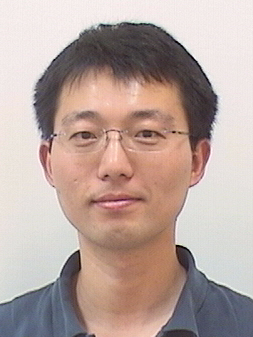 |
|
October 18th
Roy Lederman
Postdoc, Program in Applied and Computational Mathematics, Princeton University Hyper-Molecules in Cryo-Electron Microscopy (cryo-EM)
Cryo-EM is an imaging technology that is revolutionizing structural biology; the Nobel Prize in Chemistry 2017 was recently awarded to Jacques Dubochet, Joachim Frank and Richard Henderson for developing cryo-electron microscopy for the high-resolution structure determination of biomolecules in solution". Cryo-electron microscopes produce a large number of very noisy two-dimensional projection images of individual frozen molecules. Unlike related tomography methods, such as computed tomography (CT), the viewing direction of each image is unknown. The unknown directions, together with extreme levels of noise and additional technical factors, make the determination of the structure of molecules challenging. Unlike other structure determination methods, such as x-ray crystallography and nuclear magnetic resonance (NMR), cryo-EM produces measurements of individual molecules and not ensembles of molecules. Therefore, cryo-EM could potentially be used to study mixtures of different conformations of molecules. While current algorithms have been very successful at analyzing homogeneous samples, and can recover some distinct conformations mixed in solutions, the determination of multiple conformations, and in particular, continuums of similar conformations (continuous heterogeneity), remains one of the open problems in cryo-EM. I will discuss the hyper-molecules approach to continuous heterogeneity, and the numerical tools and analysis methods that we are developing in order to recover such hyper-molecules. |
 |
|
October 25th
John Harlim
Professor, Department of Mathematics, The Pennsylvania State University Nonparametric modeling for prediction and data assimilation
I will discuss a nonparametric modeling approach for forecasting stochastic dynamical systems on smooth manifolds embedded in Euclidean space. This approach allows one to evolve the probability distribution of non-trivial dynamical systems with an equation-free modeling. In the second part of this talk, I will discuss a nonparametric estimation of likelihood functions using data-driven basis functions and the theory of kernel embeddings of conditional distributions developed in the machine learning community. I will demonstrate how to use this likelihood function to estimate biased modeling error in assimilating cloudy satellite brightness temperature-like quantities. |
 |
|
November 8th
Eitan Tadmor
Distinguished University Professor, Department of Mathematics, Institute for Physical Science & Technology, Center for Scientific Computation and Mathematical Modeling (CSCAMM), University of Maryland Title: Emergent behavior in self-organized dynamics: from consensus to hydrodynamic flocking
Abstract: We discuss several first- and second-order models encountered in opinion and flocking dynamics. The models are driven by different rules of engagement, which quantify how each member interacts with its immediate neighbors. We highlight the role of geometric vs. topological neighborhoods and distinguish between local and global interactions, while addressing the following two related questions. (i) How local rules of interaction lead, over time, to the emergence of consensus; and (ii) How the flocking behavior of large crowds captured by their hydrodynamic description. Related papers:
Kinetic descriptions a mathematical bridge to better understand the world Mathematical aspects of self-organized dynamics: consensus, emergence of leaders, and social hydrodynamics Heterophilious dynamics enhances consensus From particle to kinetic and hydrodynamic descriptions of flocking |
 |
|
November 15th
Tyrus Berry
Research Associate, Department of Mathematical Science, George Mason University What geometries can we learn from data?
In the field of manifold learning, the foundational theoretical results of Coifman and Lafon (Diffusion Maps, 2006) showed that for data sampled near an embedded manifold, certain graph Laplacian constructions are consistent estimators of the Laplace-Beltrami operator on the underlying manifold. Since these operators determine the Riemannian metric, they completely describe the geometry of the manifold (as inherited from the embedding). It was later shown that different kernel functions could be used to recover any desired geometry, at least in terms of pointwise estimation of the associated Laplace-Beltrami operator. In this talk I will first briefly review the above results and then introduce new results on the spectral convergence of these graph Laplacians. These results reveal that not all geometries are accessible in the stronger spectral sense. However, when the data set is sampled from a smooth density, there is a natural conformally invariant geometry which is accessible on all compact manifolds, and even on a large class of non-compact manifolds. Moreover, the kernel which estimates this geometry has a very natural construction which we call Continuous k-Nearest Neighbors (CkNN). |
 |
|
November 29th
Yingzhou Li
Phillip Griffiths Research Assistant Professor, Department of Mathematics, Duke University Kernel functions and their fast evaluations
Kernel matrices are popular in machine learning and scientific computing, but they are limited by their quadratic complexity in both construction and storage. It is well-known that as one varies the kernel parameter, e.g., the width parameter in radial basis function kernels, the kernel matrix changes from a smooth low-rank kernel to a diagonally-dominant and then fully-diagonal kernel. Low-rank approximation methods have been widely-studied, mostly in the first case, to reduce the memory storage and the cost of computing matrix-vector products. Here, we use ideas from scientific computing to propose an extension of these methods to situations where the matrix is not well-approximated by a low-rank matrix. In particular, we construct an efficient block low-rank approximation method -- which we call the Block Basis Factorization -- and we show that it has O(n) complexity in both time and memory. Our method works for a wide range of kernel parameters, extending the domain of applicability of low-rank approximation methods, and our empirical results demonstrate the stability (small standard deviation in error) and superiority over current state-of-art kernel approximation algorithms. Related papers:
Structured Block Basis Factorization for Scalable Kernel Matrix On the numerical rank of radial basis function kernel matrices in high dimension |
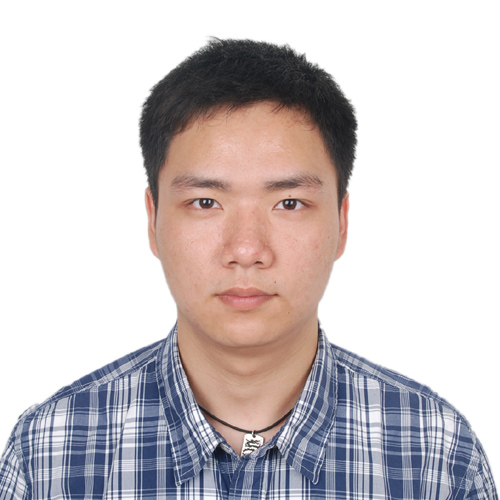 |
|
December 6th
Hau-Tieng Wu
Associate Professor, Department of Mathematics, Duke University Some Data Analysis Tools Inspired by Medical Challenges Fetal ECG as an example
We discuss a particular interest in medicine extracting hidden dynamics from a single observed time series composed of multiple oscillatory signals, which could be viewed as a single-channel blind source separation problem. This problem is common nowadays due to the popular mobile health monitoring devices, and is made challenging by the structure of the signal which consists of non-sinusoidal oscillations with time varying amplitude/frequency, and by the heteroscedastic nature of the noise. Inspired by the fetal electrocardiogram (ECG) signal analysis from the single lead maternal abdominal ECG signal, in this talk I will discuss some new data analysis tools, including the cepstrum-based nonlinear-type time-frequency analysis and fiber-bundle based manifold learning technique. In addition to showing the results in fetal ECG analysis, I will also show how the approach could be applied to simultaneously extract the instantaneous heart/respiratory rate from a PPG signal during exercise. If time permits, the clinical trial results will be discussed.Abstract: Some Data Analysis Tools Inspired by Medical Challenges Fetal ECG as an example Related papers:
|
 |
|
December 20th
Valeriya Naumova
Senior research scientist, Section for Computing and Software, Simula Research Laboratory (Simula) Multi-parameter regularisation for solving unmixing problems in signal
processing: theoretical and practical aspects
Motivated by real-life applications in signal processing and image analysis, where the quantity of interest is generated by several sources to be accurately modelled and separated, as well as by recent advances in sparse regularisation theory and optimisation, we present a theoretical and algorithmic framework for optimal support recovery in inverse problems of unmixing type by means of multi-penalty regularisation. While multi-penalty regularisation is not a novel technique [1], we aim at providing precise reconstruction guarantees and methods for adaptive regularisation parameter choice. We consider and analyse a regularisation functional composed of a data-fidelity term, where signal and noise are additively mixed, a non-smooth, convex, sparsity promoting term, and a convex penalty term to model the noise. We prove not only that the well-established theory for sparse recovery in the single parameter case can be translated to the multi-penalty settings, but we also demonstrate the enhanced properties of multi-penalty regularisation in terms of support identification compared to sole $\ell^1$-minimisation. Extending the notion of Lasso path algorithm, we additionally propose an efficient procedure for an adaptive parameter choice in multi-penalty regularisation, focusing on the recovery of the correct support of the solution. The approach essentially enables a fast construction of a tiling over the parameter space in such a way that each tile corresponds to a different sparsity pattern of the solution. Finally, we propose an iterative alternating algorithm based on simple iterative thresholding steps to perform the minimisation of the extended multi-penalty functional, containing non-smooth and non-convex sparsity promoting term. To exemplify the robustness and effectiveness of the multi-penalty framework, we provide an extensive numerical analysis of our method and compare it with state-of-the-art single-penalty algorithms for compressed sensing problems. This is joint work with Markus Grasmair [3, 4], Norwegian University of Science and Technology; Timo Klock [4], Simula Research Laboratory, and Johannes Maly and Steffen Peter [2], Technical University of Munich. Related papers:
Y. Meyer, Oscillating patterns in image processing and nonlinear evolution equations Minimization of multi-penalty functionals by alternating iterative thresholding and optimal parameter choices Conditions on optimal support recovery in unmixing problems by means of multi-penalty regularization Multiple parameter learning with regularization path algorithms |
 |
|
Organizers: Mauro Maggioni, Wenjing Liao, Stefano Vigogna. Contacts us if you would like to meet with the speakers. |
The data seminar will take place on Wednesdays at 3pm, in Whitehead Hall 304, during the semester, on Johns Hopkins Homewood campus this map). |
|
February 8th
Kasso Okoudjou
Professor and Associate Chair, Department of Mathematics, University of Maryland, College Park https://www.math.umd.edu/~okoudjou/ Inductive and numerical approaches to the HRT conjecture
Given a non-zero square integrable function $g$ and $\Lambda=\{(a_k, b_k)\}_{k=1}^N \subset \Br^2$ let $G(g, \Lambda)=\{e^{2\pi i b_k \cdot}g(\cdot - a_k)\}_{k=1}^N.$ The Heil-Ramanathan-Topiwala (HRT) Conjecture is the question of whether $G(g, \Lambda)$ is linearly independent. For the last two decades, very little progress has been made in settling the conjecture. In the first part of the talk, I will give an overview of the state of the conjecture. I will then describe recent inductive and numerical approaches to attack the conjecture. If time permits, I will present some new positive results in the special case where $g$ is real-valued. |
 |
|
February 15th
Jerome Darbon
Assistant Professor, Applied Mathematics, Brown University https://www.brown.edu/academics/applied-mathematics/jerome-darbon On convex finite-dimensional variational methods in imaging sciences,
and Hamilton-Jacobi equations
We consider standard finite-dimensional variational models used in signal/image processing that consist in minimizing an energy involving a data fidelity term and a regularization term. We propose new remarks from a theoretical perspective which give a precise description on how the solutions of the optimization problem depend on the amount of smoothing effects and the data itself. The dependence of the minimal values of the energy is shown to be ruled by Hamilton-Jacobi equations, while the minimizers $u(x,t)$ for the observed images x and smoothing parameters $t$ are given by $ u(x,t)=x -\nabla H(\nabla E(x,t))$ where $E(x,t)$ is the minimal value of the energy and $H$ is a Hamiltonian related to the data fidelity term. Various vanishing smoothing parameter results are derived illustrating the role played by the prior in such limits. Finally, we briefly present an efficient numerical numerical method for solving certain Hamilton-Jacobi equations in high dimension and some applications in optimal control. |
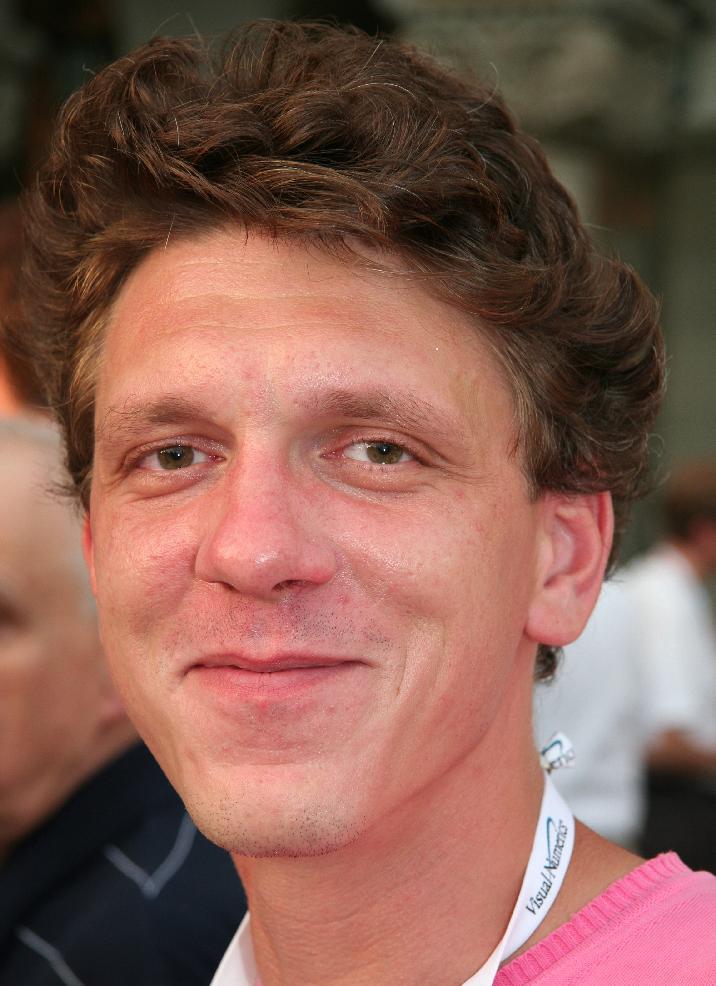 |
|
March 8th
Matthew Hirn
Assistant Professor, Department of Mathematics, Michigan State University https://matthewhirn.wordpress.com/ Learning many body physics via multiscale, multilayer machine learnining architectures
Deep learning algorithms are making their mark in machine learning, obtaining state of the art results across computer vision, natural language processing, auditory signal processing and more. A wavelet scattering transform has the general architecture of a convolutional neural network, but leverages structure within data by encoding multiscale, stable invariants relevant to the task at hand. This approach is particularly relevant to data generated by physical systems, as such data must respect underlying physical laws. We illustrate this point through many body physics, in which scattering transforms can be loosely interpreted as the machine learning version of a fast multipole method (FMM). Unlike FMMs, which efficiently simulate the physical system, the scattering transform learns the underlying physical kernel from given states of the system. The resulting learning algorithm obtains state of the art numerical results for the regression of molecular energies in quantum chemistry, obtaining errors on the order of more costly quantum mechanical approaches. |
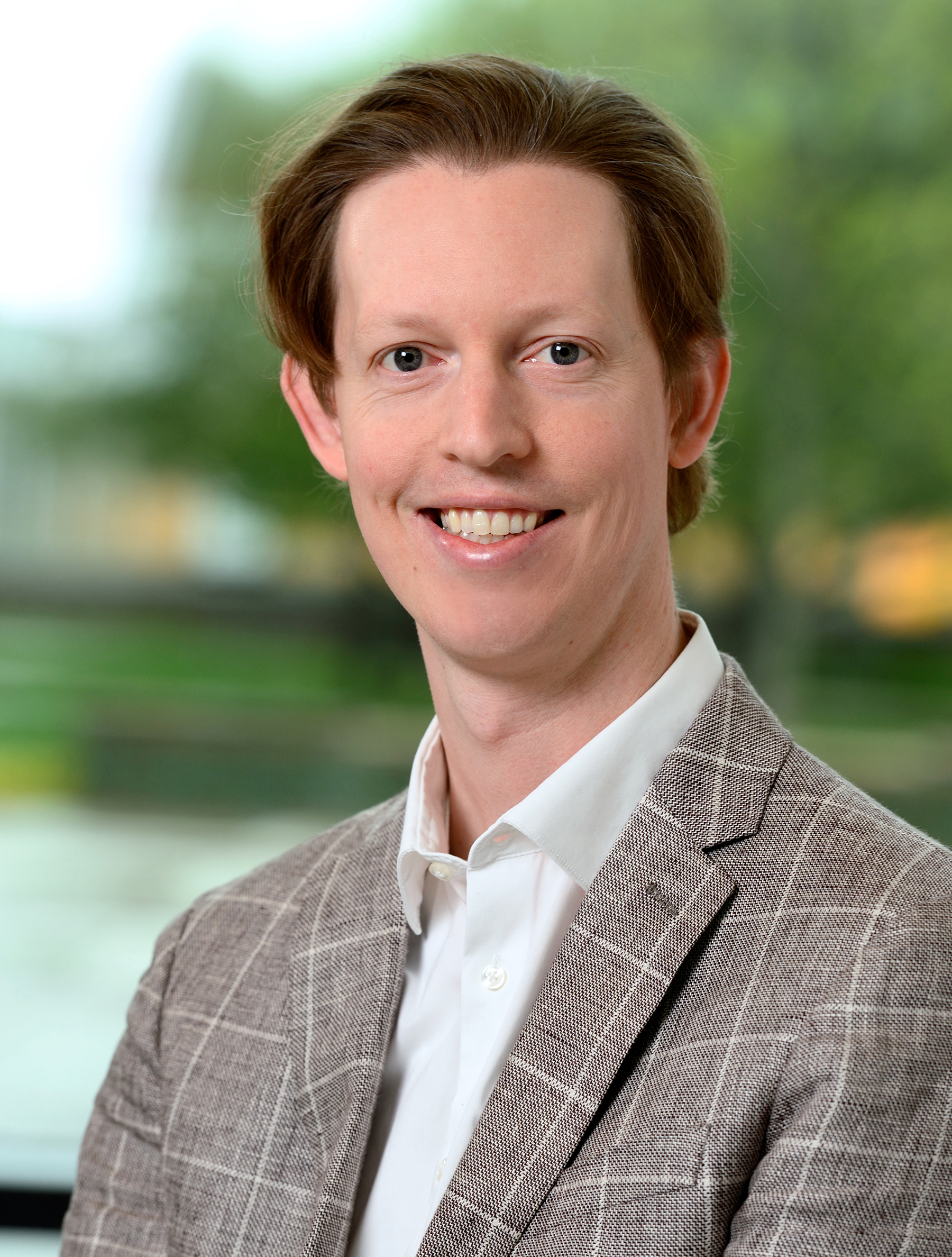 |
|
March 29th
Jason Eisner
Professor, Department of Computer Science, Johns Hopkins University http://www.cs.jhu.edu/~jason/ Probabilistic Modeling of Natural Language
Natural language is a particular kind of time-series data. By way of introduction, I will informally sketch some of the phenomena that occur in natural language data and the kinds of probabilistic models that are traditionally used to describe them (e.g., context free grammars, Chinese restaurant processes, graphical models, finite-state transducers, recurrent neural networks augmented with memory). Many of these are covered in my JHU fall course, EN.600.465 Natural Language Processing. As an illustrative example, I will then describe a new conditional probability model that combines LSTMs with finite-state transducers to predict one string from another. For example, such a model can convert between the past and present tenses of an unfamiliar verb. Such pairwise conditional distributions can be combined into graphical models that model the relationships among many strings. |
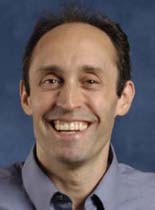 |
|
April 5th
Afonso Bandeira
Assistant Professor, Courant Institute of Mathematical Sciences, NYU http://www.cims.nyu.edu/~bandeira/ On Phase Transitions for Spiked Random Matrix and Tensor Models
A central problem of random matrix theory is to understand the eigenvalues of spiked random matrix models, in which a prominent eigenvector (or low rank structure) is planted into a random matrix. These distributions form natural statistical models for principal component analysis (PCA) problems throughout the sciences, where the goal is often to recover or detect the planted low rank structured. In this talk we discuss fundamental limitations of statistical methods to perform these tasks and methods that outperform PCA at it. Emphasis will be given to low rank structures arising in Synchronization problems. Time permitting, analogous results for spiked tensor models will also be discussed. Joint work with: Amelia Perry, Alex Wein, and Ankur Moitra. |
 |
|
April 12th
Andrew Christlieb
MSU Foundation Professor (Department of Mathematics) and Department Chair (Department of Computational Mathematics, Science and Engineering), Michigan State University https://cmse.msu.edu/directory/faculty/andrew-christlieb/ A sub-linear deterministic FFT for sparse high dimensional signals
In this talk we investigate the problems of efficient recover of sparse signals (sparsity=k) in a high dimensional setting. In particular, we are going to investigate efficient recovery of the k largest Fourier modes of a signal of size N^d, where N is the bandwidth and d is the dimension. Our objective is the development of a high dimensional sub-linear FFT, d=100 or 1000, that can recover the signal in O(d k log k) time. The methodology is based on our one dimensional deterministic sparse FFT that is O(k log k). The original method is recursive and based on ratios of short FFTs of pares of sub-sampled signals. The same ratio test allows us to identify when there is a collision due to aliasing the sub-sampled signals. The recursive nature allows us to separate and identify frequencies that have collided. Key in the high dimensional setting is the introduction of a partial unwrapping method and a tilting method that can ensure that we avoid collisions in the high dimensional setting on sub-sampled grids. We present the method, some analysis and results for a range of tests in both the noisy and noiseless cases. |
 |
|
April 26th
Wojciech Czaja
Professor, Department of Mathematics, University of Maryland, College Park https://www.math.umd.edu/~wojtek/ Solving Fredholm integrals from incomplete measurements
We present an algorithm to solve Fredholm integrals of the first kind with tensor product structures, from a limited number of measurements with the goal of using this method to accelerate Nuclear Magnetic Resonance (NMR) acquisition. This is done by incorporating compressive sampling type arguments to fill in the missing measurements using a priori knowledge of the structure of the data. In the first step, we recover a compressed data matrix from measurements that form a tight frame, and establish that these measurements satisfy the restricted isometry property (RIP). In the second step, we solve the zeroth-order regularization minimization problem using the Venkataramanan-Song-Huerlimann algorithm. We demonstrate the performance of this algorithm on simulated and real data and we compare it with other sampling techniques. Our theory applied to both 2D and multidimensional NMR. |
|
Organizers: Mauro Maggioni, Wenjing Liao, Stefano Vigogna. Contacts us if you would like to meet with the speakers. |
The data seminar will take place on Wednesdays at 3pm, in Krieger Hall 309, during the semester, on Johns Hopkins Homewood campus (building 39 at location F2/3 on this map). |
|
September 7th
Radu Balan
Professor, Department of Mathematics, University of Maryland, College Park http://www.math.umd.edu/~rvbalan/ Statistics of the Stability Bounds in the Phase Retrieval Problem
In this talk we present a local-global Lipschitz analysis of the phase retrieval problem. Additionally we present tentative estimates of the tail-bound for the distribution of the global Lipschitz constants. Specifically it is known that if the frame $\{f_1,\ldots,f_m\}$ for $C^n$ is phase retrievable then there are constants $a_0$ and $b_0$ so that for every $x,y\in C^n$: $a_0 ||xx^*-yy^*||_1^2 \leq \sum_{k=1}^m ||\langle x,f_k\rangle|^2-|\langle y,f_k\rangle|^2|^2 \leq b_0 ||xx^*-yy^*||_1^2$. Assume $f_1,\ldots,f_m$ are independent realizations with entries from $CN(0,1)$. In this talk we establish estimates for the probability $P(a_0>a)$. |
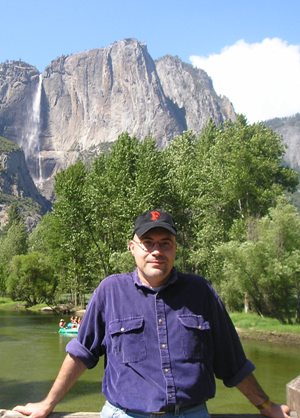 |
|
September 21st
Charles Meneveau
Louis M. Sardella Professor of Mechanical Engineering, Johns Hopkins University http://pages.jh.edu/~cmeneve1/ Hydrodynamic turbulence in the era of big data: simulation, data, and analysis
In this talk, we review the classic problem of Navier-Stokes turbulence, the role numerical simulations have played in advancing the field, and the data challenges posed by these simulations. We describe the Johns Hopkins Turbulence Databases (JHTDB) and present some sample applications from the areas of velocity increment statistics and finite time Lyapunov exponents in isotropic turbulence and wall modeling for Large Eddy Simulations of wall-bounded flows. Related papers:
A Web services accessible database of turbulent channel flow and its use for testing a new integral wall model for LES Large-deviation statistics of vorticity stretching in isotropic turbulence A public turbulence database cluster and applications to study Lagrangian evolution of velocity increments in turbulence |
 |
|
Note date and place: September 23rd - 2pm - Gilman 132
Ben Leimkuhler
Professor of Mathematics, University of Edinburgh http://kac.maths.ed.ac.uk/~bl/ From Molecular Dynamics to Large Scale Inference
Molecular models and data analytics problems give rise to very large systems of stochastic differential equations (SDEs) whose paths are designed to ergodically sample multimodal probability distributions. An important challenge for the numerical analyst (or the data scientist, for that matter) is the design of numerical procedures to generate these paths. One of the interesting ideas is to construct stochastic numerical methods with close attention to the error in the invariant measure. Another is to redesign the underlying stochastic dynamics to reduce bias or locally transform variables to enhance sampling efficiency. I will illustrate these ideas with various examples, including a geodesic integrator for constrained Langevin dynamics [1] and an ensemble sampling strategy for distributed inference [2]. |
 |
|
September 28th
Rene Vidal
Professor of Biomedical Engineering, Computer Science, Mechanical Engineering, and Electrical and Computer Engineering, Johns Hopkins University http://cis.jhu.edu/~rvidal/ Global Optimality in Matrix and Tensor Factorization, Deep Learning, and Beyond
Matrix, tensor, and other factorization techniques are used in many applications and have enjoyed significant empirical success in many fields. However, common to a vast majority of these problems is the significant disadvantage that the associated optimization problems are typically non-convex due to a multilinear form or other convexity destroying transformation. Building on ideas from convex relaxations of matrix factorizations, in this talk I will present a very general framework which allows for the analysis of a wide range of non-convex factorization problems - including matrix factorization, tensor factorization, and deep neural network training formulations. In particular, I will present sufficient conditions under which a local minimum of the non-convex optimization problem is a global minimum and show that if the size of the factorized variables is large enough then from any initialization it is possible to find a global minimizer using a local descent algorithm. |
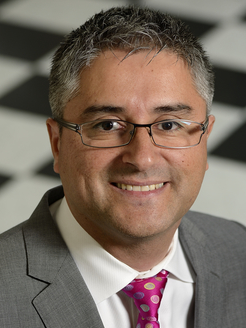 |
|
October 26th
Robert Pego
Professor, Department of Mathematical Sciences, Carnegie Mellon University http://www.math.cmu.edu/~bobpego/ Microdroplet instablity for incompressible distance between shapes
AbstractThe least-action problem for geodesic distance on the 'manifold' of fluid-blob shapes exhibits instability due to microdroplet formation.This reflects a striking connection between Arnold's least-action principle for incompressible Euler flows and geodesic paths for Wasserstein distance. A connection with fluid mixture models via a variant of Brenier's relaxed least-action principle for generalized Euler flows will be outlined also. This is joint work with Jian-Guo Liu and Dejan Slepcev. |
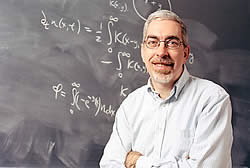 |
|
November 2nd
Dejan Slepcev
Associate Professor, Department of Mathematical Sciences, Carnegie Mellon University http://www.math.cmu.edu/~slepcev/ Variational problems on graphs and their continuum limits
We will discuss variational problems arising in machine learning and their limits as the number of data points goes to infinity. Consider point clouds obtained as random samples of an underlying "ground-truth" measure. Graph representing the point cloud is obtained by assigning weights to edges based on the distance between the points. Many machine learning tasks, such as clustering and classification, can be posed as minimizing functionals on such graphs. We consider functionals involving graph cuts and graph laplacians and their limits as the number of data points goes to infinity. In particular we establish under what conditions the minimizers of discrete problems have a well defined continuum limit, and characterize the limit. The talk is primarily based on joint work with Nicolas Garcia Trillos, as well as on works with Xavier Bresson, Moritz Gerlach, Matthias Hein, Thomas Laurent, James von Brecht and Matt Thorpe. |
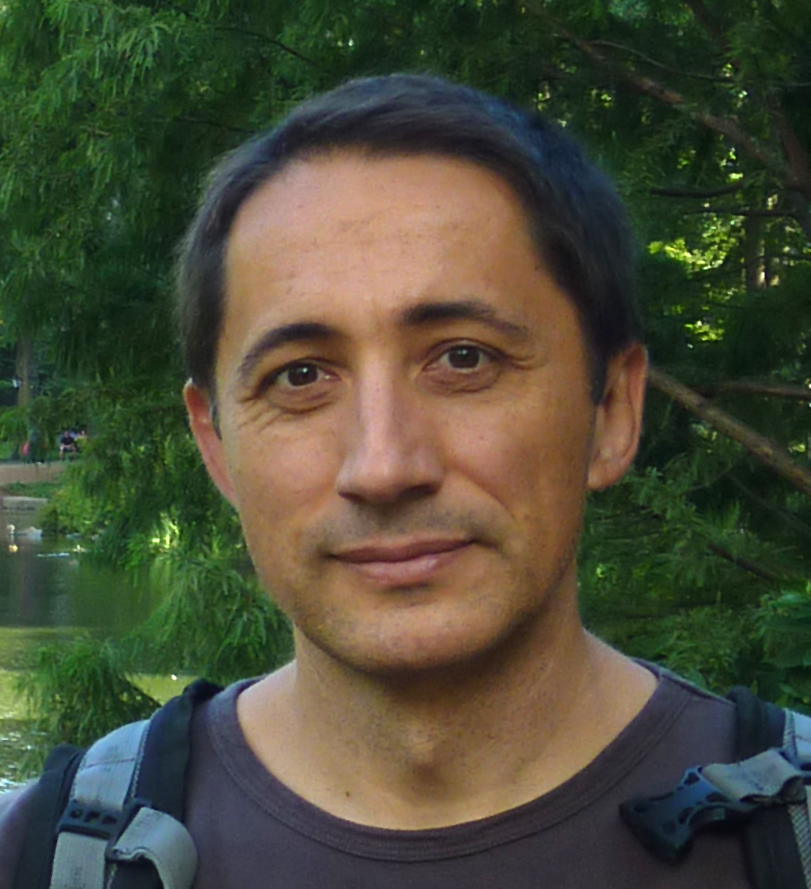 |
|
November 9th
Markos Katsoulakis
Professor, Department of Mathematics and Statistics http://people.math.umass.edu/~markos/ Scalable Information Inequalities for Uncertainty Quantification in high dimensional probabilistic models
In this this talk we discuss new scalable information bounds for quantities of interest of complex stochastic models. The scalability of inequalities allows us to (a) obtain uncertainty quantification bounds for quantities of interest in high-dimensional systems and/or for long time stochastic dynamics; (b) assess the impact of large model perturbations such as in nonlinear response regimes in statistical mechanics; (c) address model-form uncertainty, i.e. compare different extended probabilistic models and corresponding quantities of interest. We demonstrate these tools in fast sensitivity screening of chemical reaction networks with a very large number of parameters, and towards obtaining robust and tight uncertainty quantification bounds for phase diagrams in statistical mechanics models. Related papers:
Scalable Information Inequalities for Uncertainty Quantification Accelerated Sensitivity Analysis in High- Dimensional Stochastic Reaction Networks Path-Space Information Bounds for Uncertainty Quantification and Sensitivity Analysis of Stochastic Dynamics Path-space variational inference for non-equilibrium coarse-grained systems Effects of correlated parameters and uncertainty in electronic-structure-based chemical kinetic modelling |
 |
|
November 30th
Youssef Marzouk
Associate Professor of Aeronautics and Astronautics, Massachusetts Institute of Technology http://aeroastro.mit.edu/faculty-research/faculty-list/youssef-m-marzouk Measure transport approaches for Bayesian computation
We will discuss how transport maps, i.e., deterministic couplings between probability measures, can enable useful new approaches to Bayesian computation. A first use involves a combination of optimal transport and Metropolis correction; here, we use continuous transportation to transform typical MCMC proposals into adapted non-Gaussian proposals, both local and global. Second, we discuss a variational approach to Bayesian inference that constructs a deterministic transport map from a reference distribution to the posterior, without resorting to MCMC. Independent and unweighted samples can then be obtained by pushing forward reference samples through the map. Making either approach efficient in high dimensions, however, requires identifying and exploiting low-dimensional structure. We present new results relating the sparsity and decomposability of transports to the conditional independence structure of the target distribution. We also describe conditions, common in inverse problems, under which transport maps have a particular low-rank or near-identity structure. In general, these properties of transports can yield more efficient algorithms. As a particular example, we derive new deterministic "online" algorithms for Bayesian inference in nonlinear and non-Gaussian state-space models with static parameters. This is joint work with Daniele Bigoni, Matthew Parno, and Alessio Spantini. |
 |
|
Note date and place: December 2nd - 10am - Gilman 132
Alex Cloninger
Gibbs Assistant Professor and NSF Postdoctoral Fellow, Yale University http://users.math.yale.edu/~ac2528 Incorporation of Geometry into Learning Algorithms and Medicine
This talk focuses on two instances in which scientific fields outside mathematics benefit from incorporating the geometry of the data. In each instance, the applications area motivates the need for new mathematical approaches and algorithms, and leads to interesting new questions. (1) A method to determine and predict drug treatment effectiveness for patients based off their baseline information. This motivates building a function adapted diffusion operator high dimensional data X when the function F can only be evaluated on large subsets of X, and defining a localized filtration of F and estimation values of F at a finer scale than it is reliable naively. (2) The current empirical success of deep learning in imaging and medical applications, in which theory and understanding is lagging far behind.. By assuming the data lies near low dimensional manifolds and building local wavelet frames, we improve on existing theory that breaks down when the ambient dimension is large (the regime in which deep learning has seen the most success) |
 |
|
December 7th
Ben Adcock
Assistant Professor, Simons Fraser University http://benadcock.org/ Sparse polynomial approximation of high-dimensional functions
Many problems in scientific computing require the approximation of smooth, high-dimensional functions from limited amounts of data. For instance, a common problem in uncertainty quantification involves identifying the parameter dependence of the output of a computational model. Complex physical systems require computational models with many parameters, resulting in multivariate functions of many variables. Although the amount of data may be large, the curse of dimensionality essentially prohibits collecting or processing enough data to reconstruct the unknown function using classical approximation techniques. In this talk, I will give an overview of the approximation of smooth, high-dimensional functions by sparse polynomial expansions. I will focus on the recent application of techniques from compressed sensing to this problem, and demonstrate how such approaches theoretically overcome the curse of dimensionality. If time, I will also discuss a number of extensions, including dealing with corrupted and/or unstructured data, the effect of model error and incorporating additional information such as gradient data. I will also highlight several challenges and open problems. This is joint work with Casie Bao, Simone Brugiapaglia and Yi Sui (SFU). |
 |



